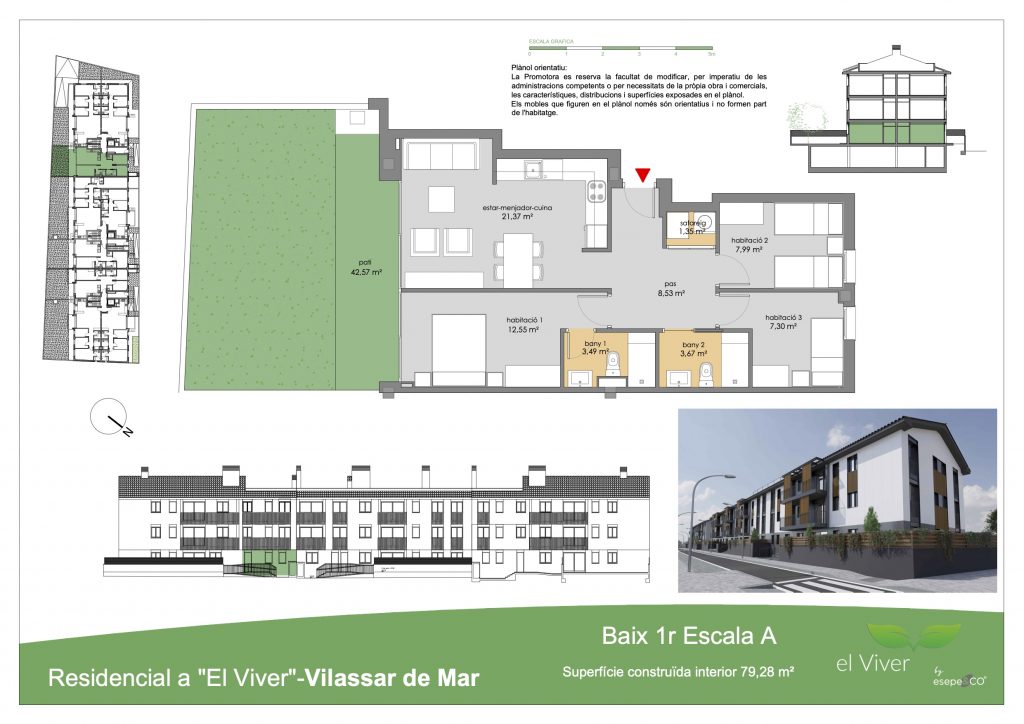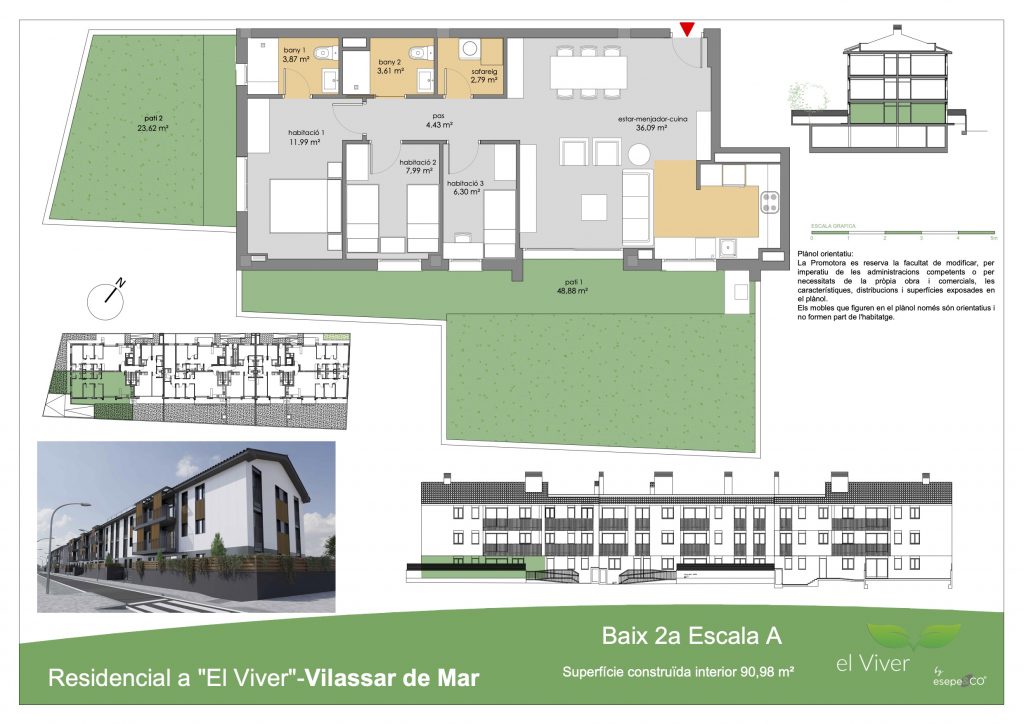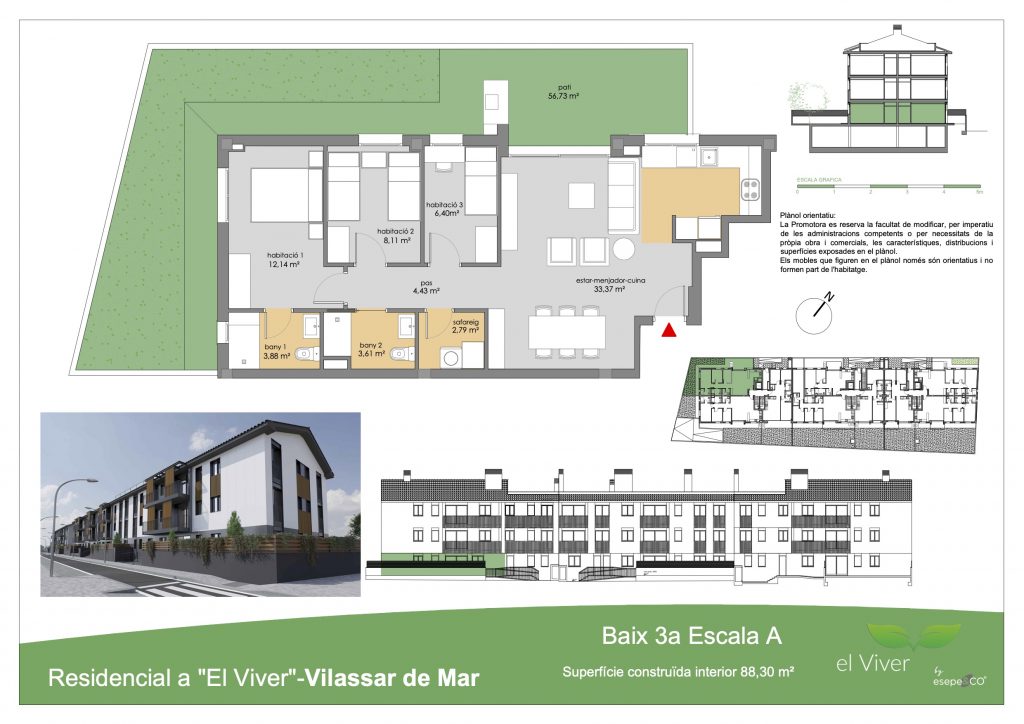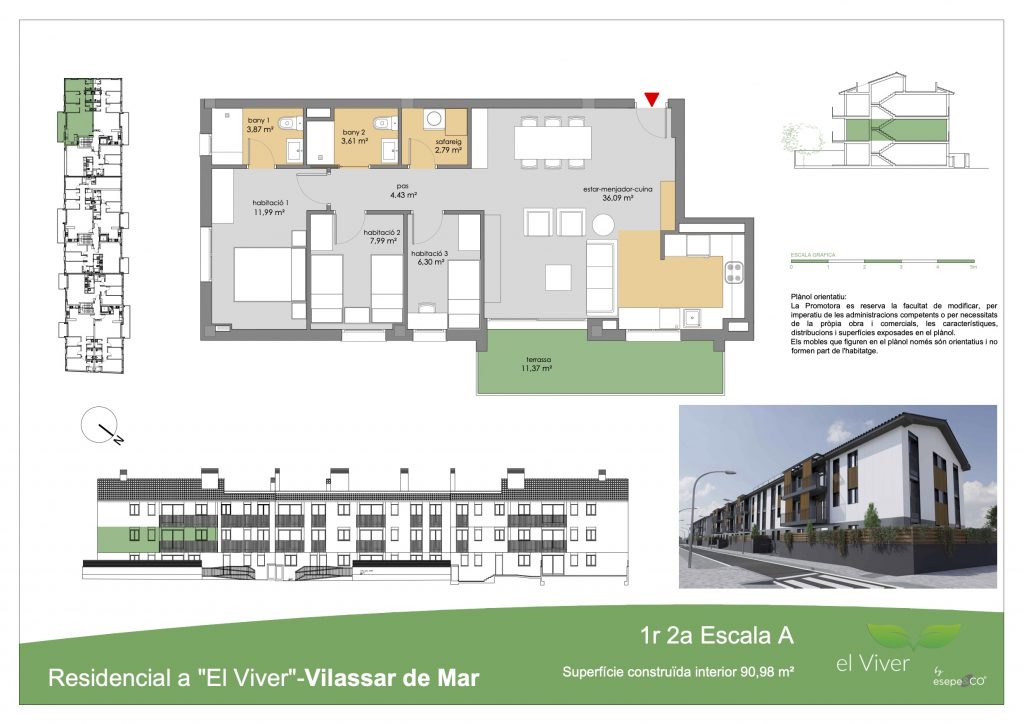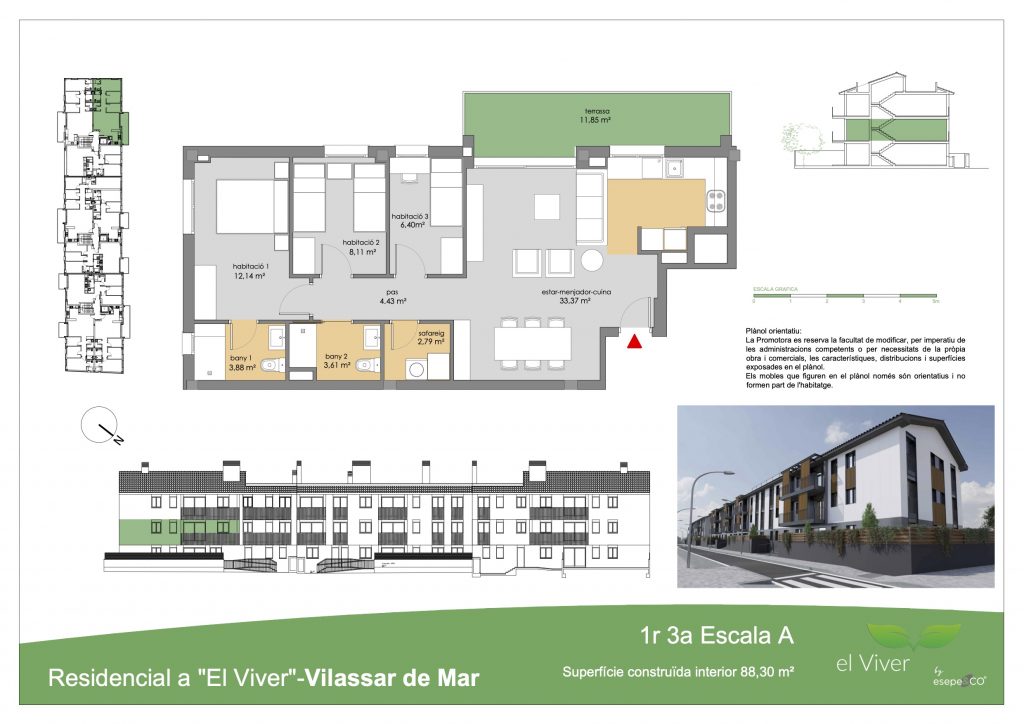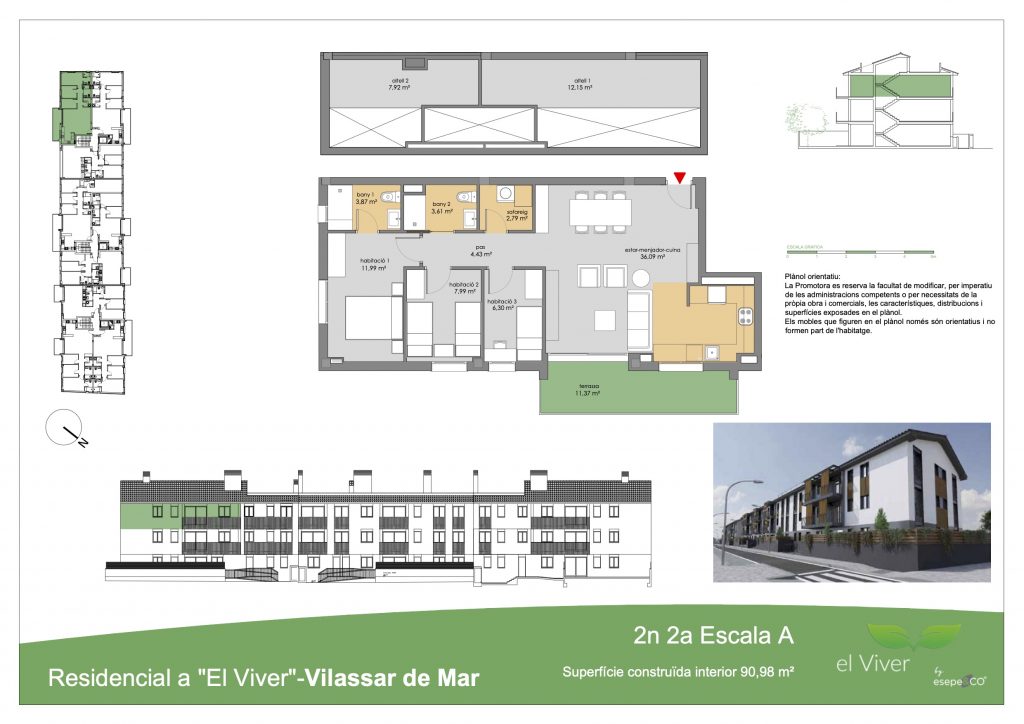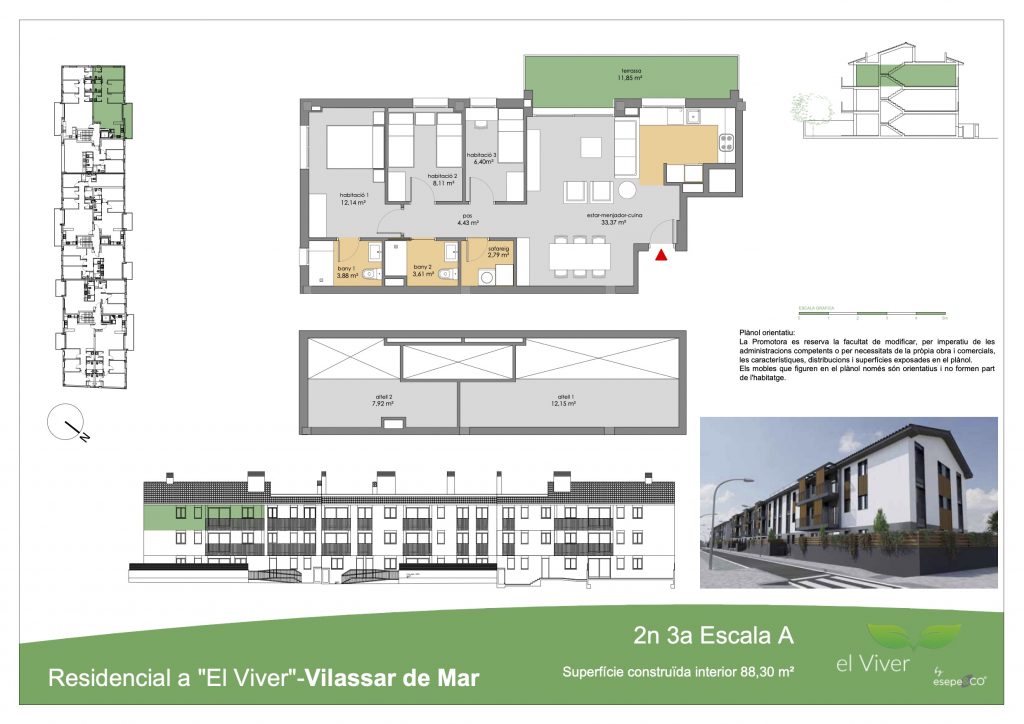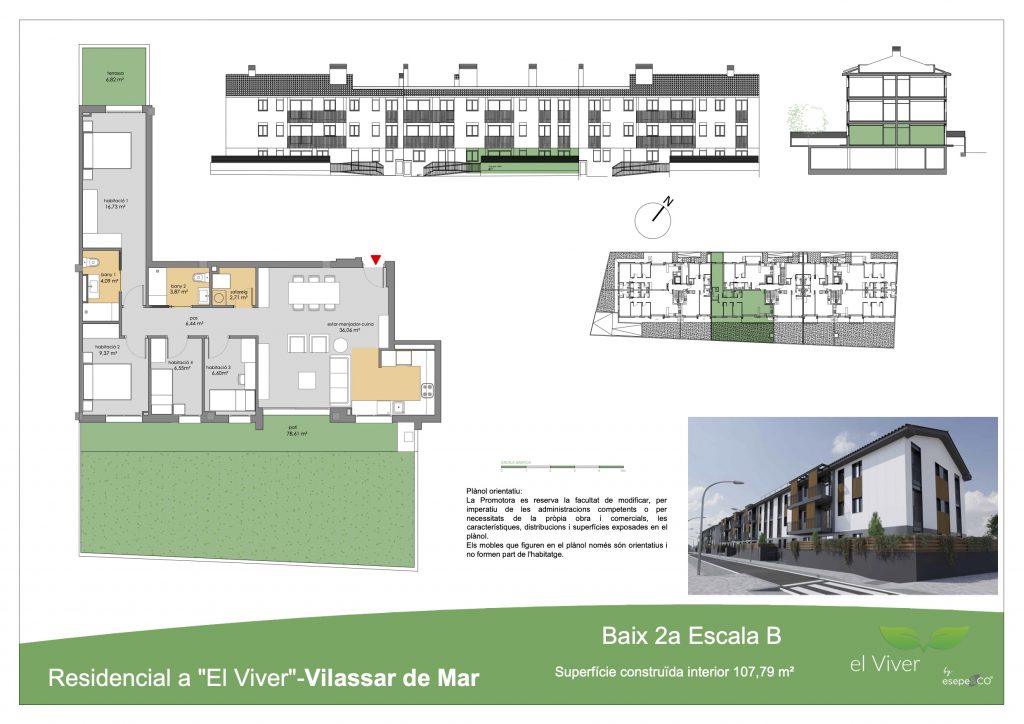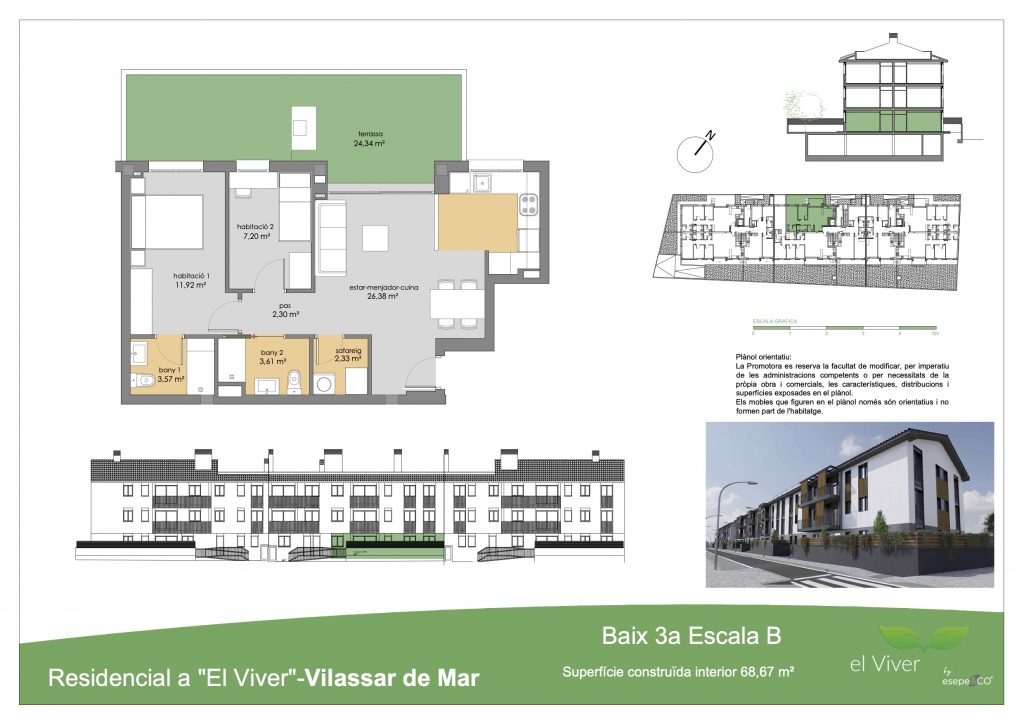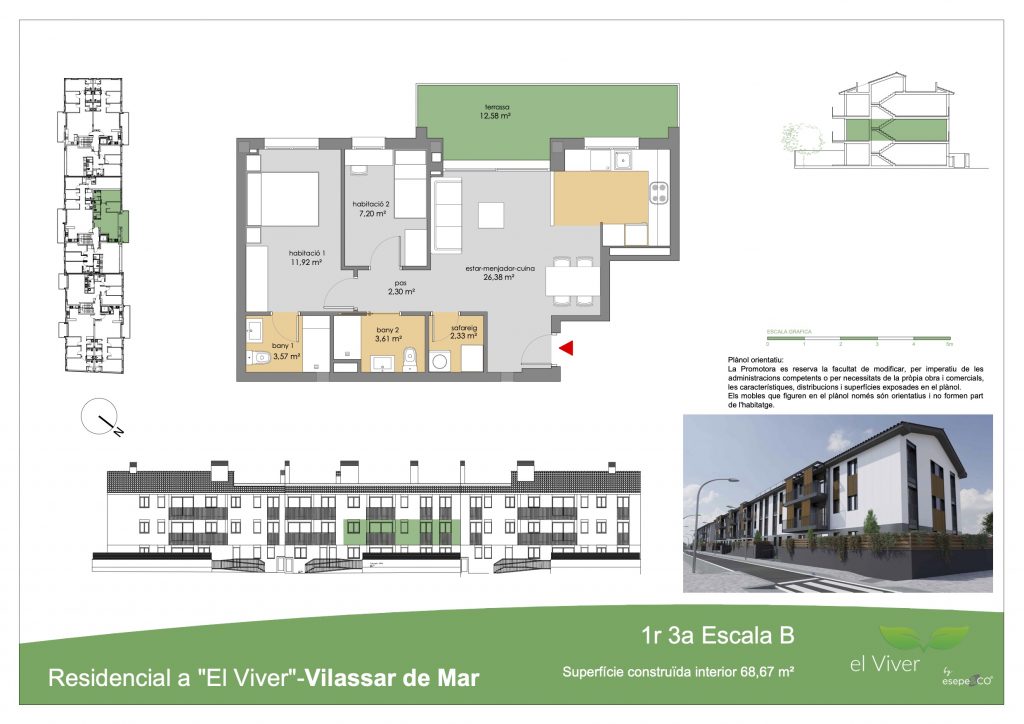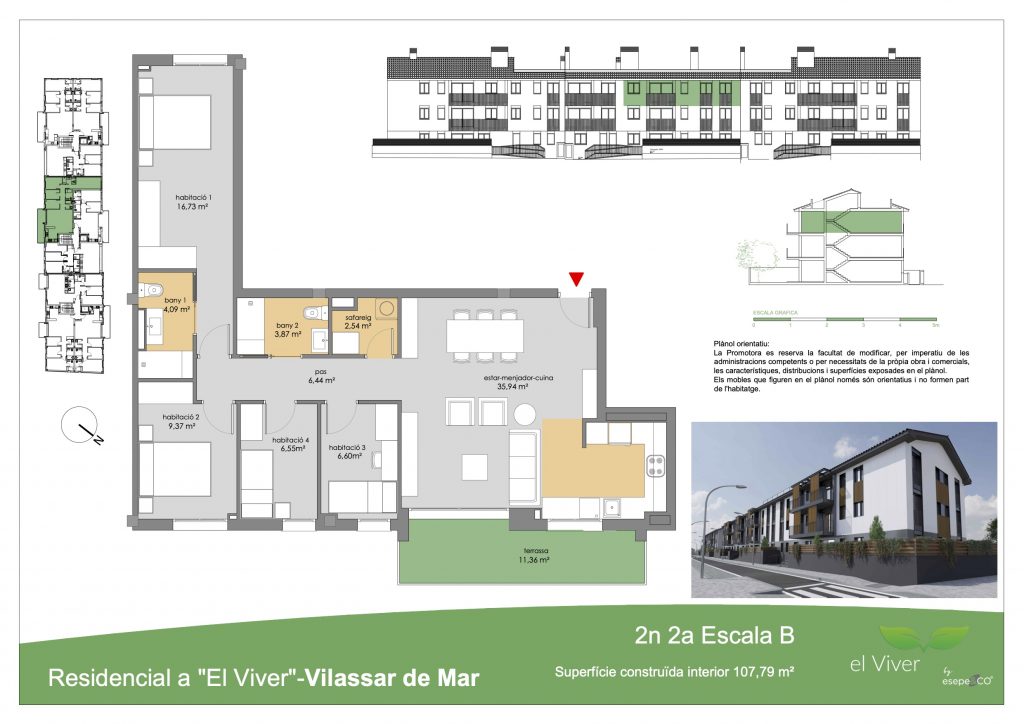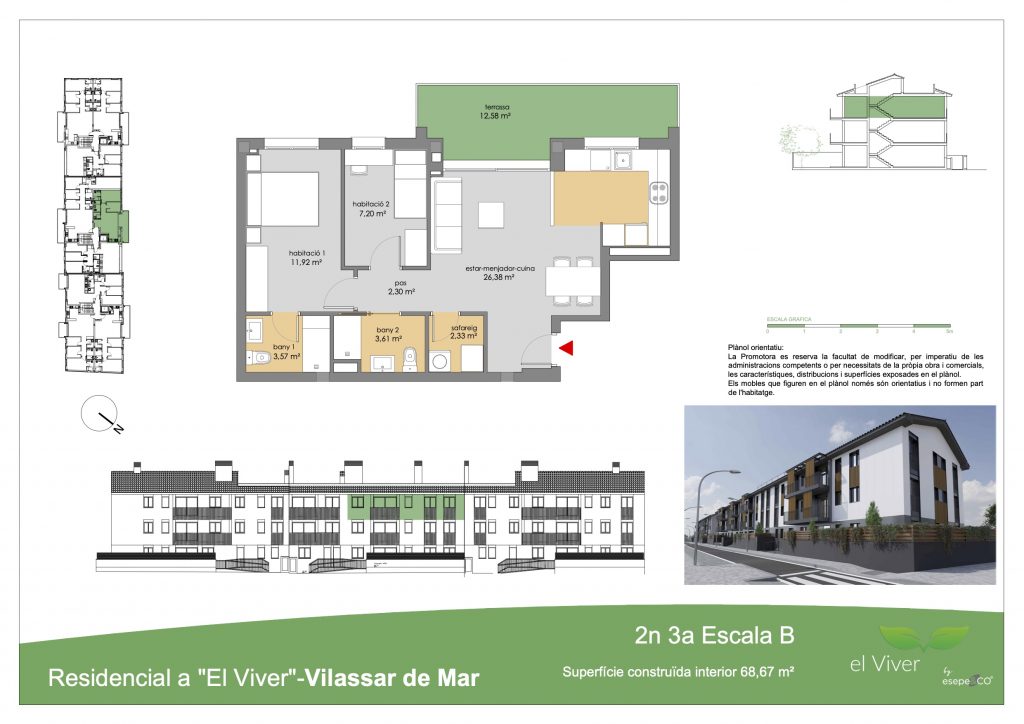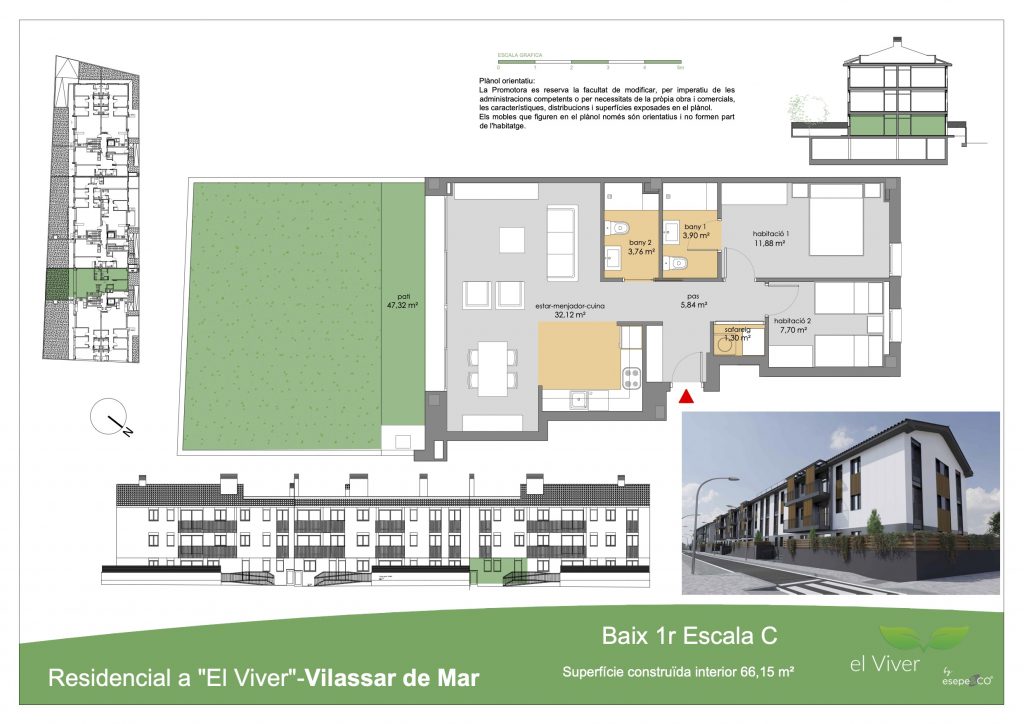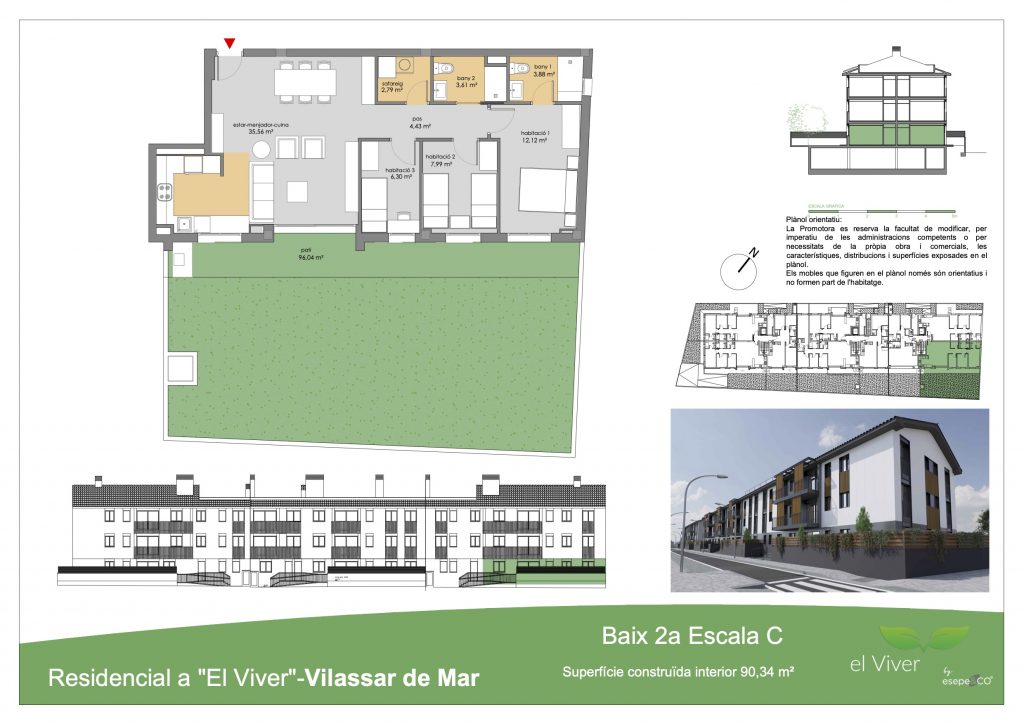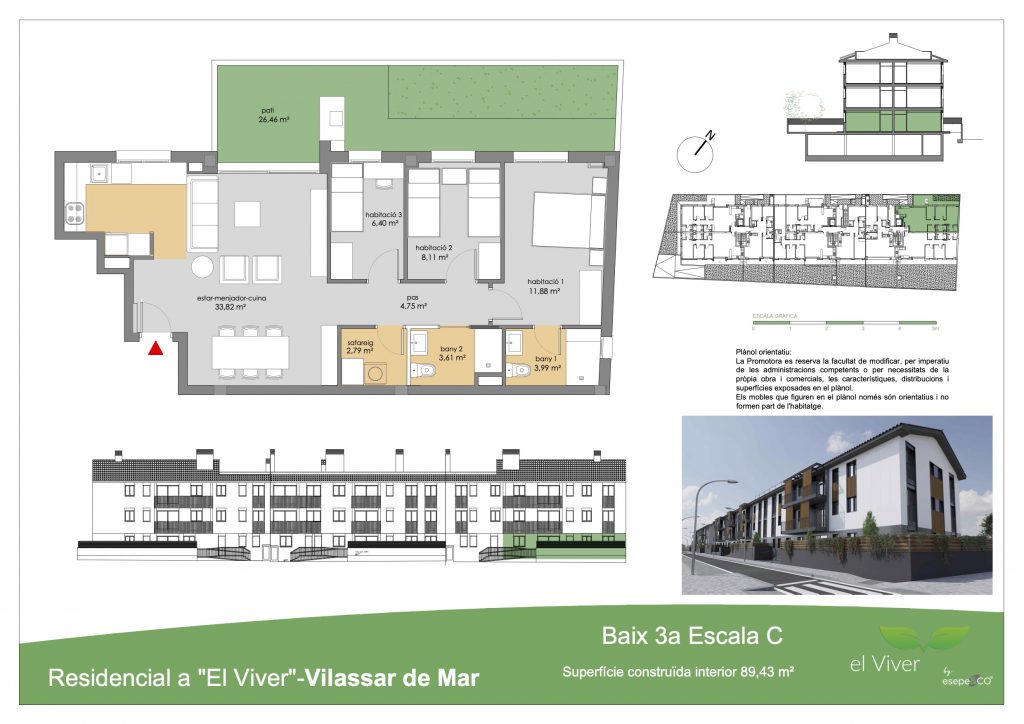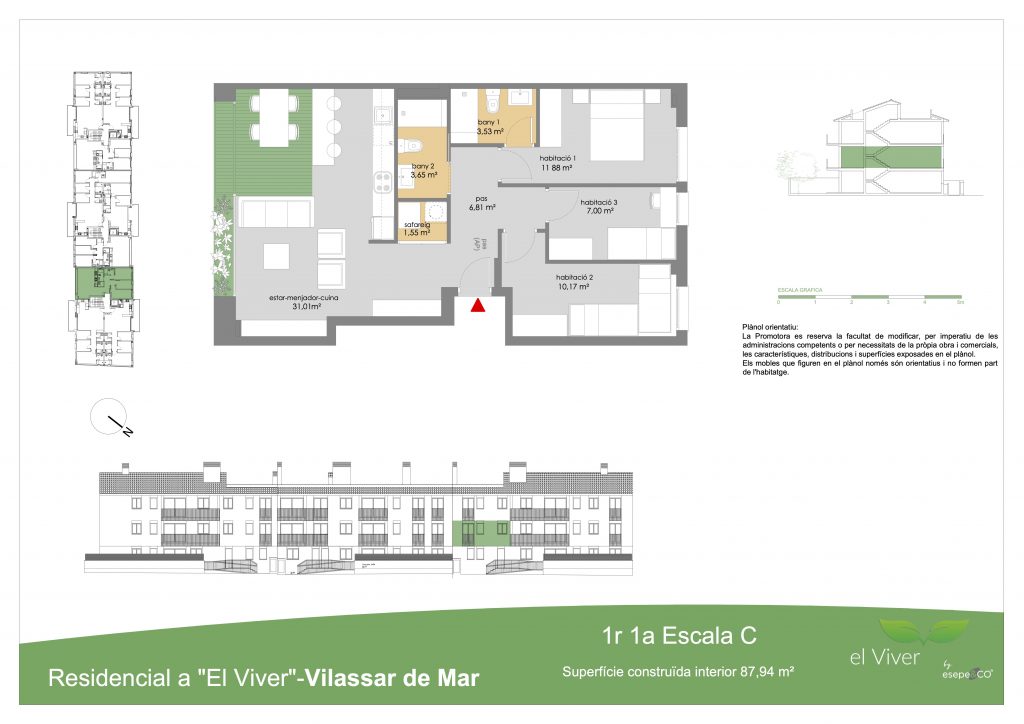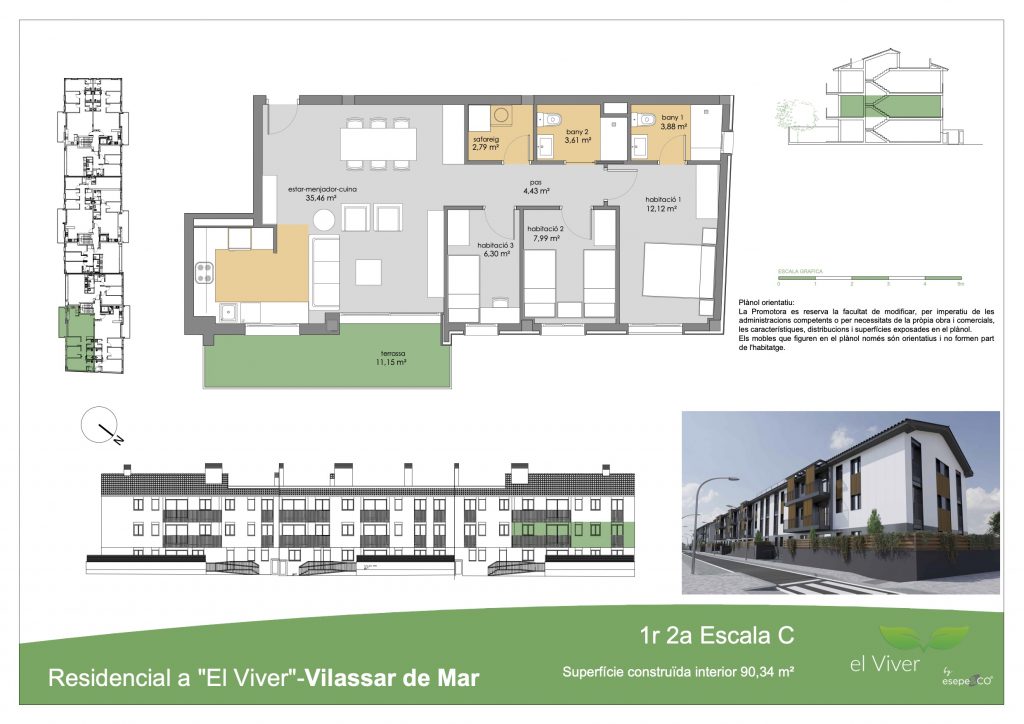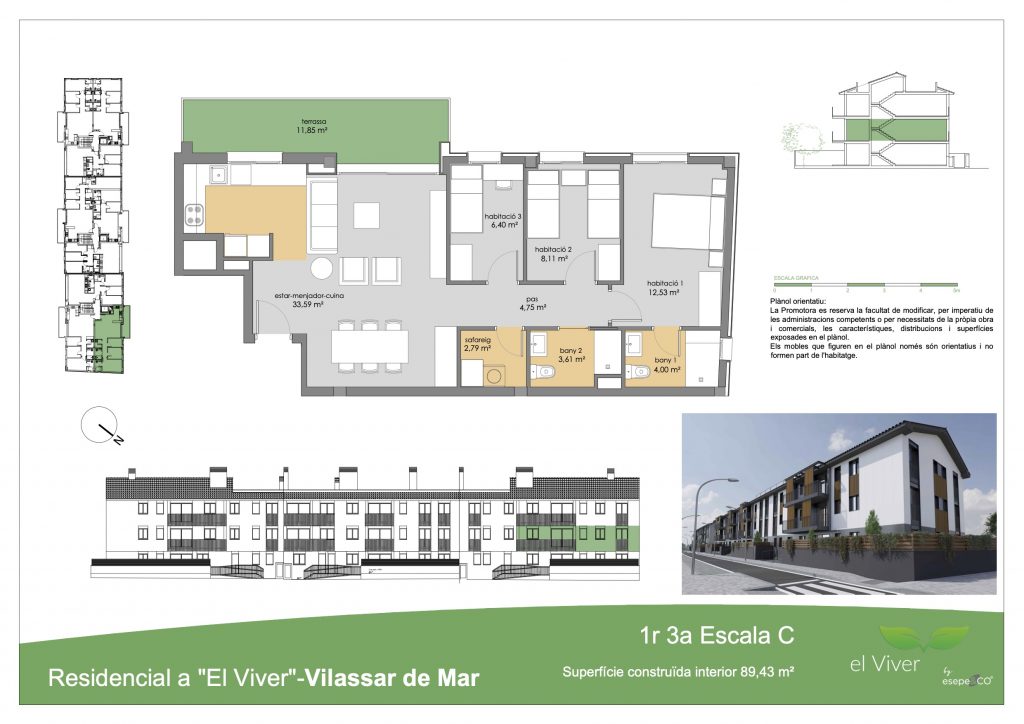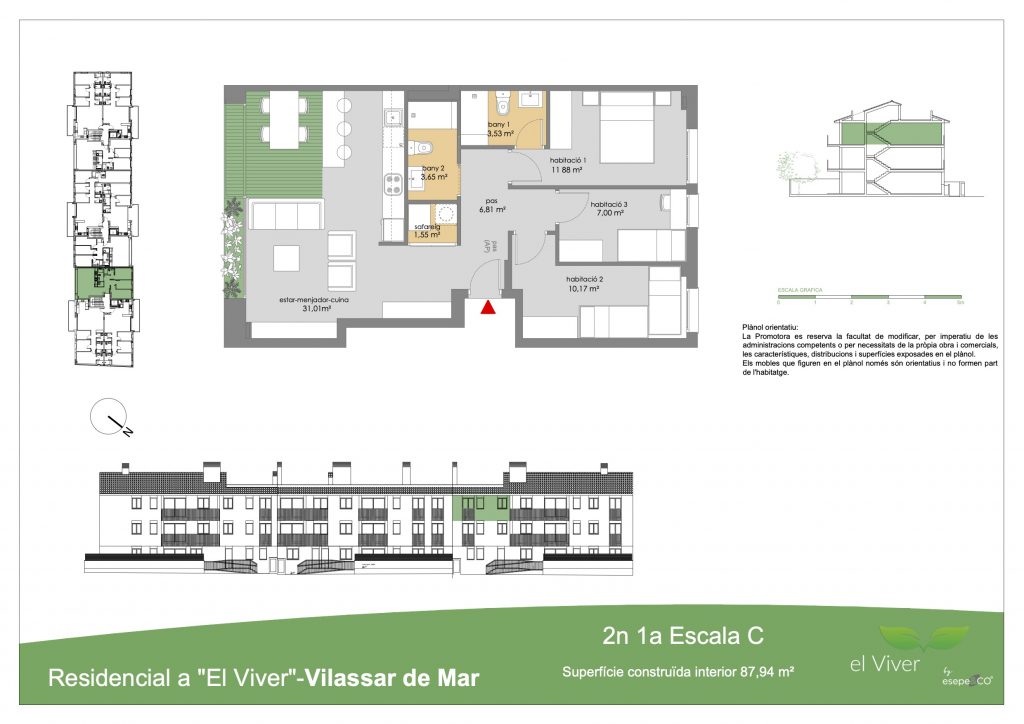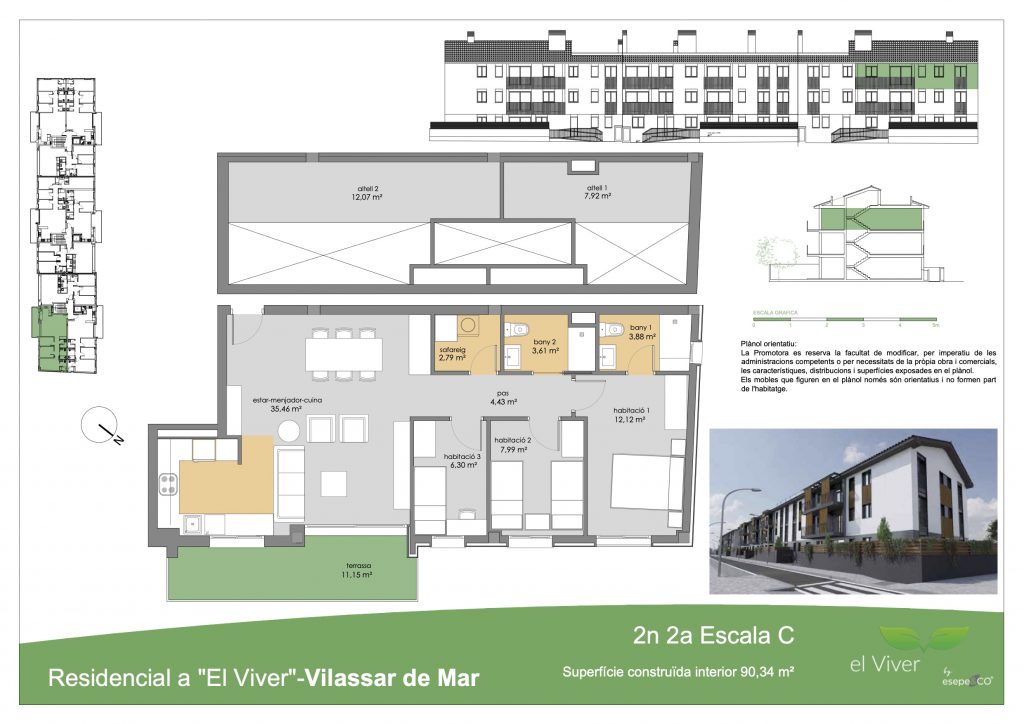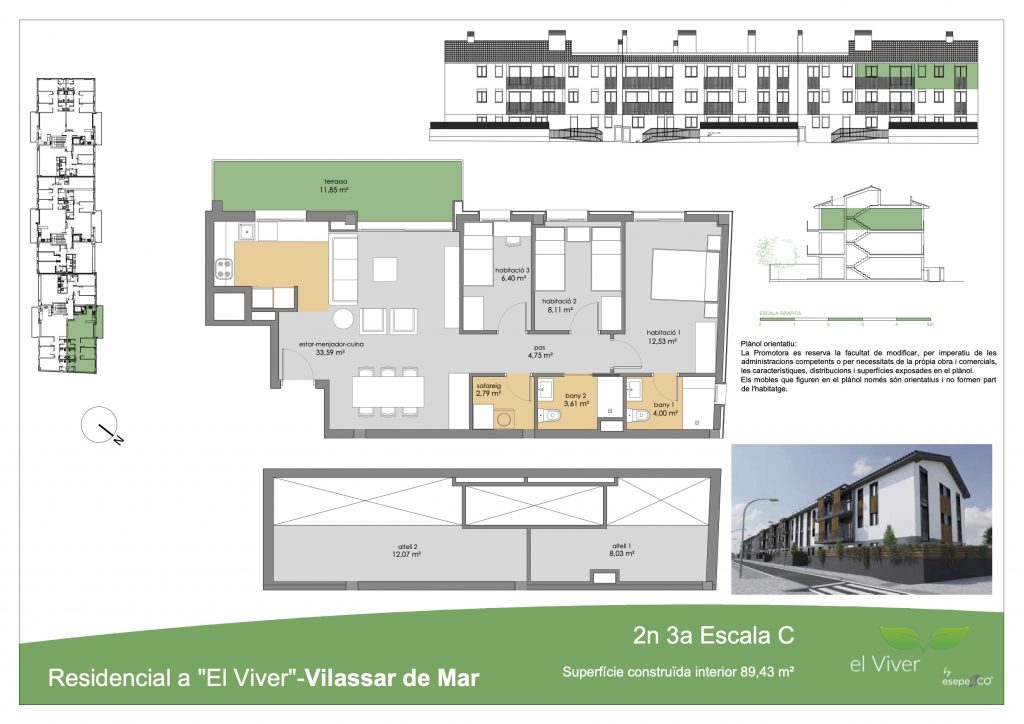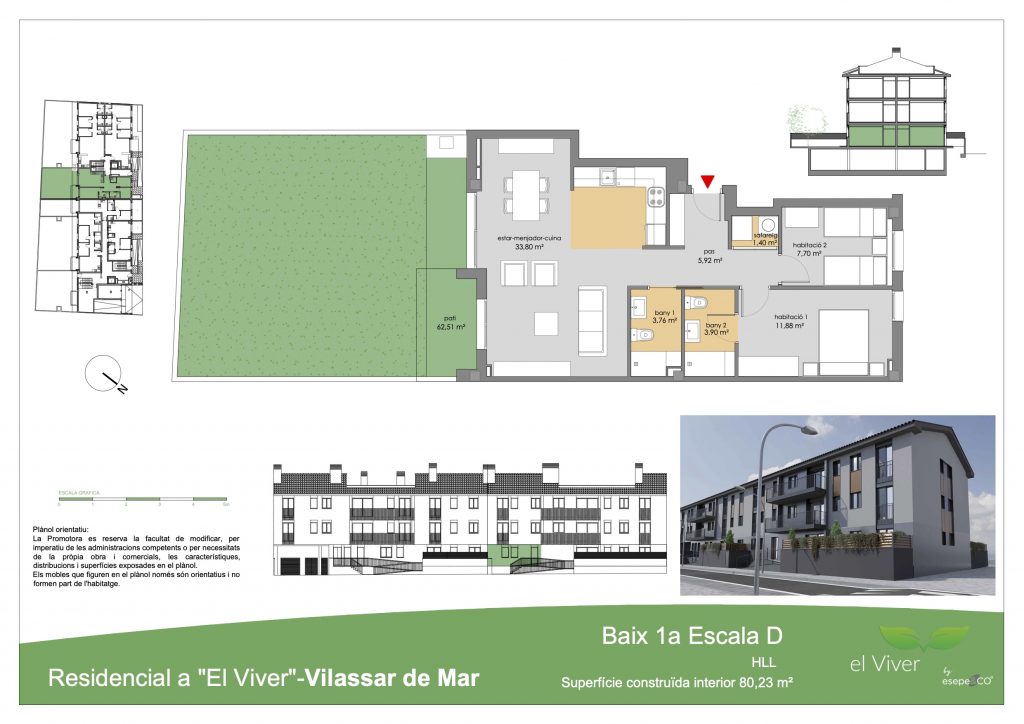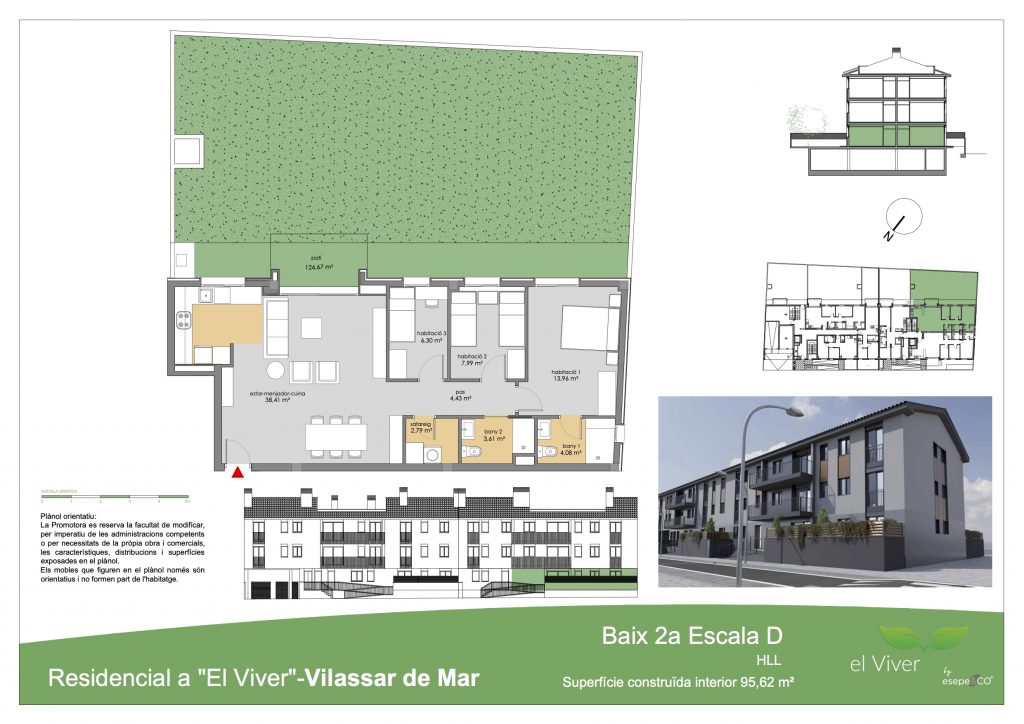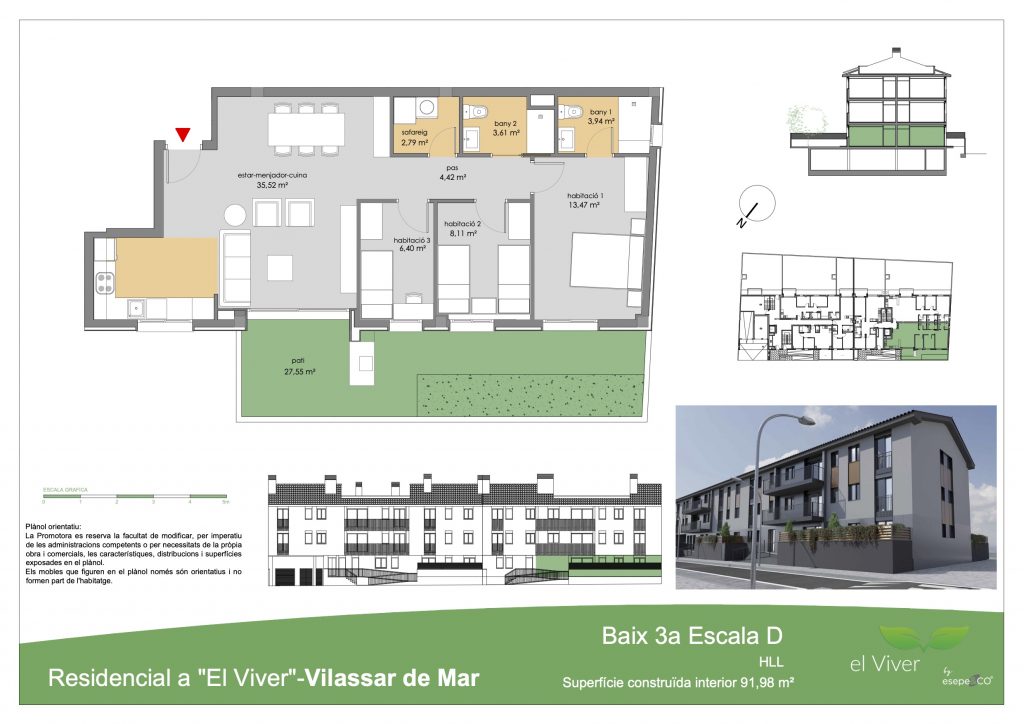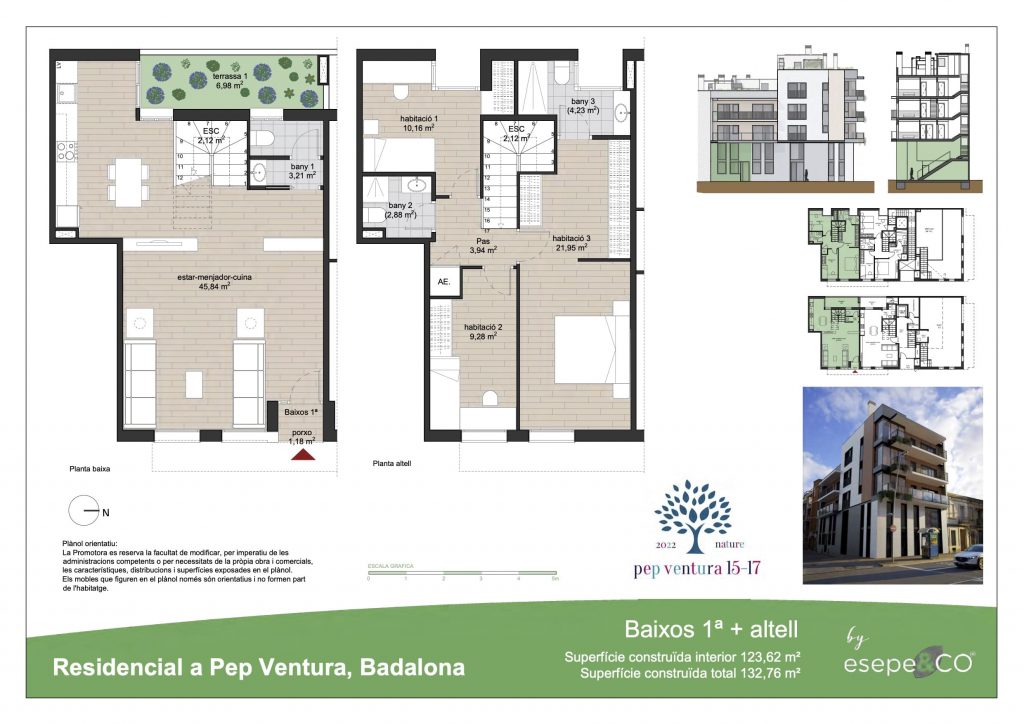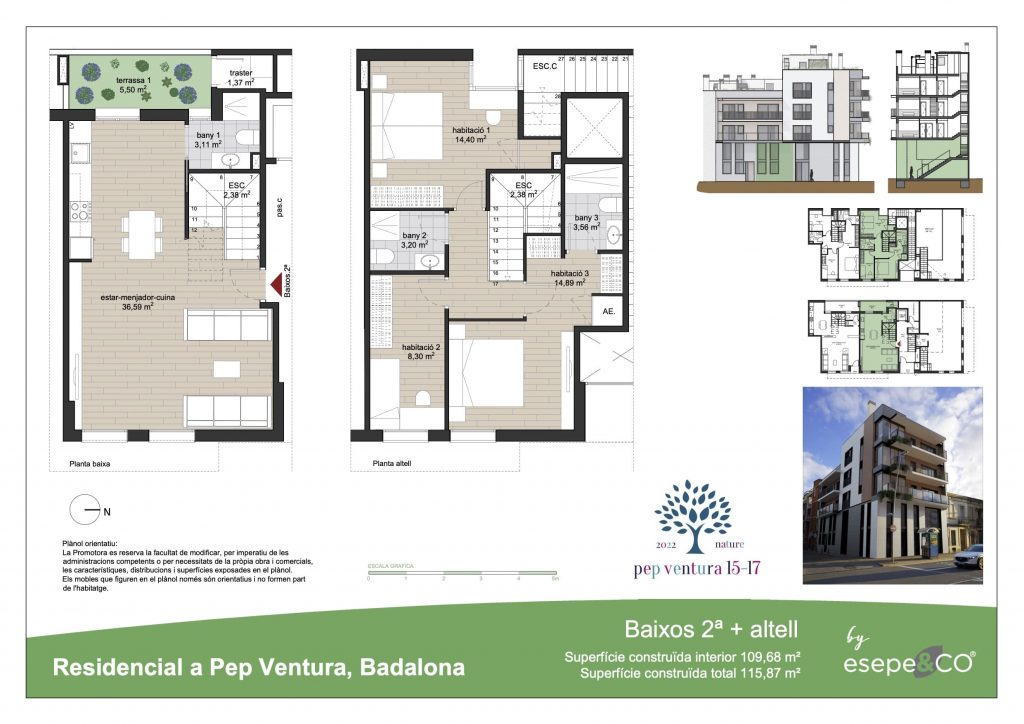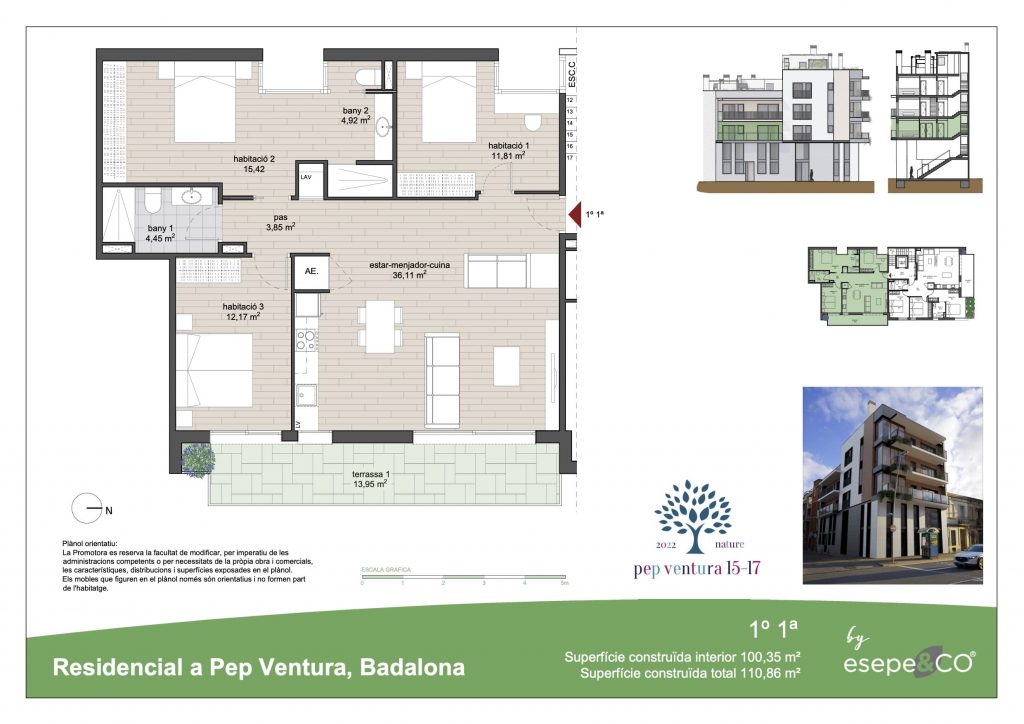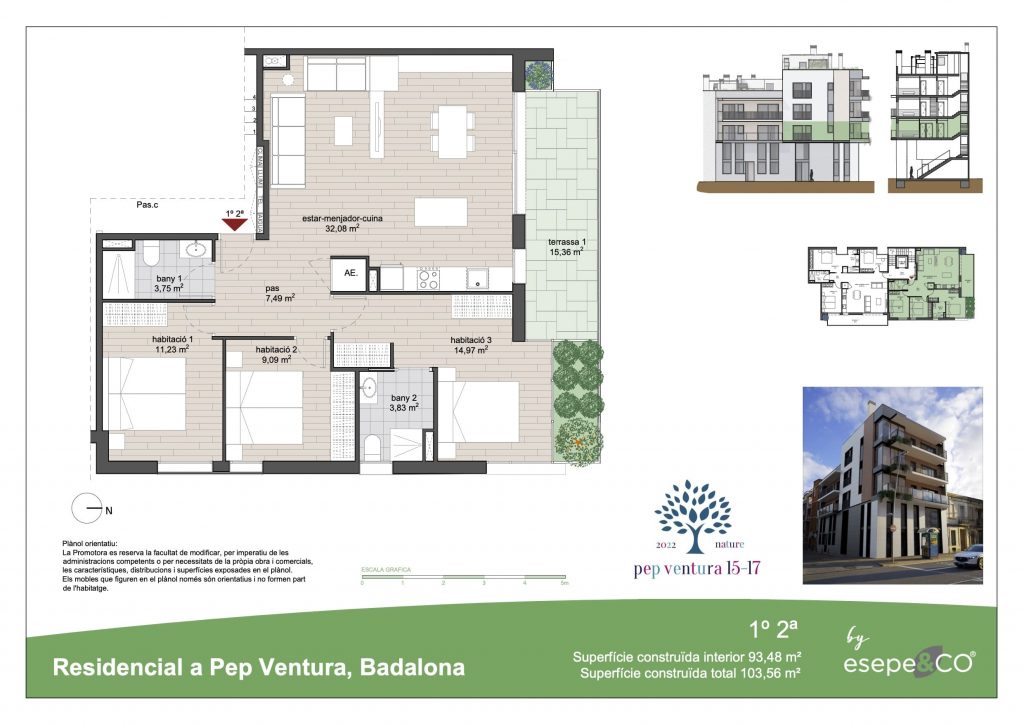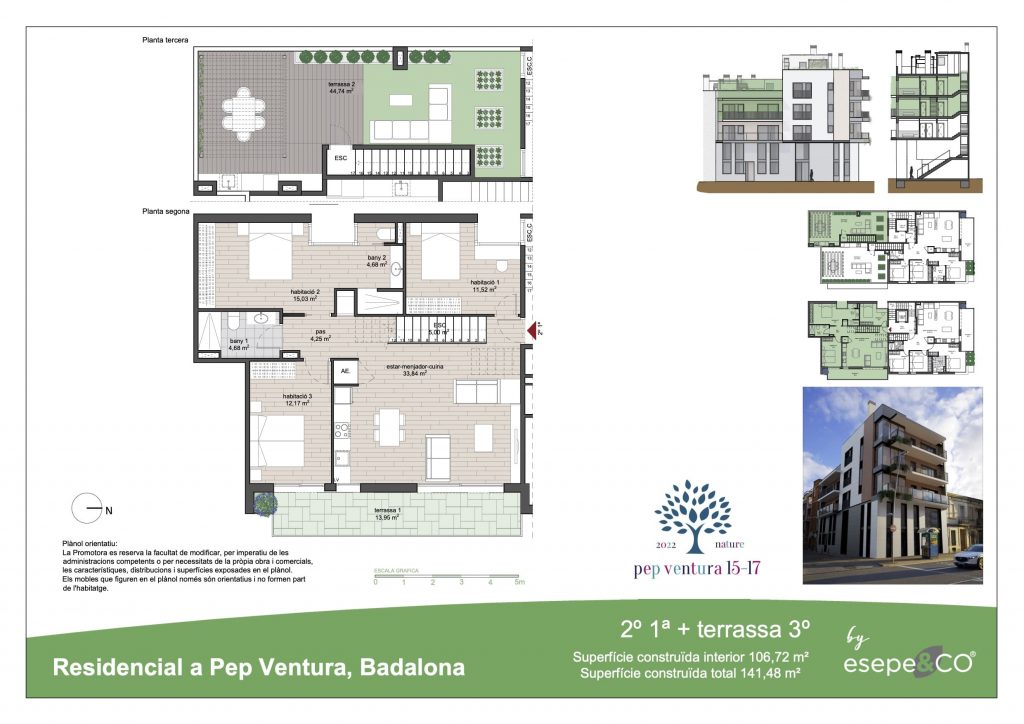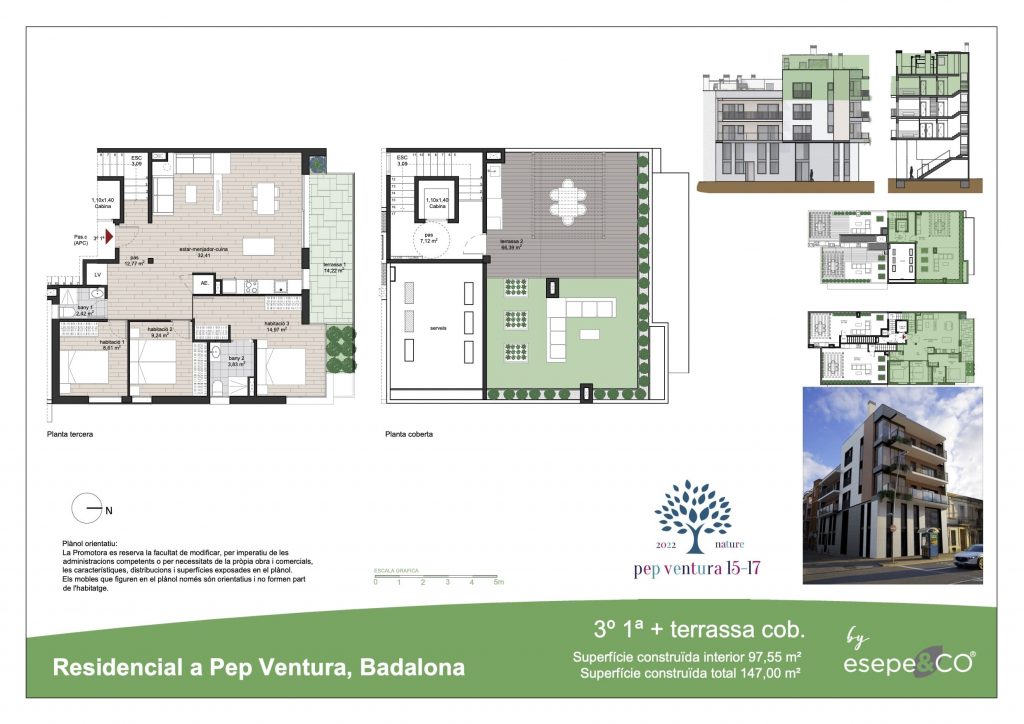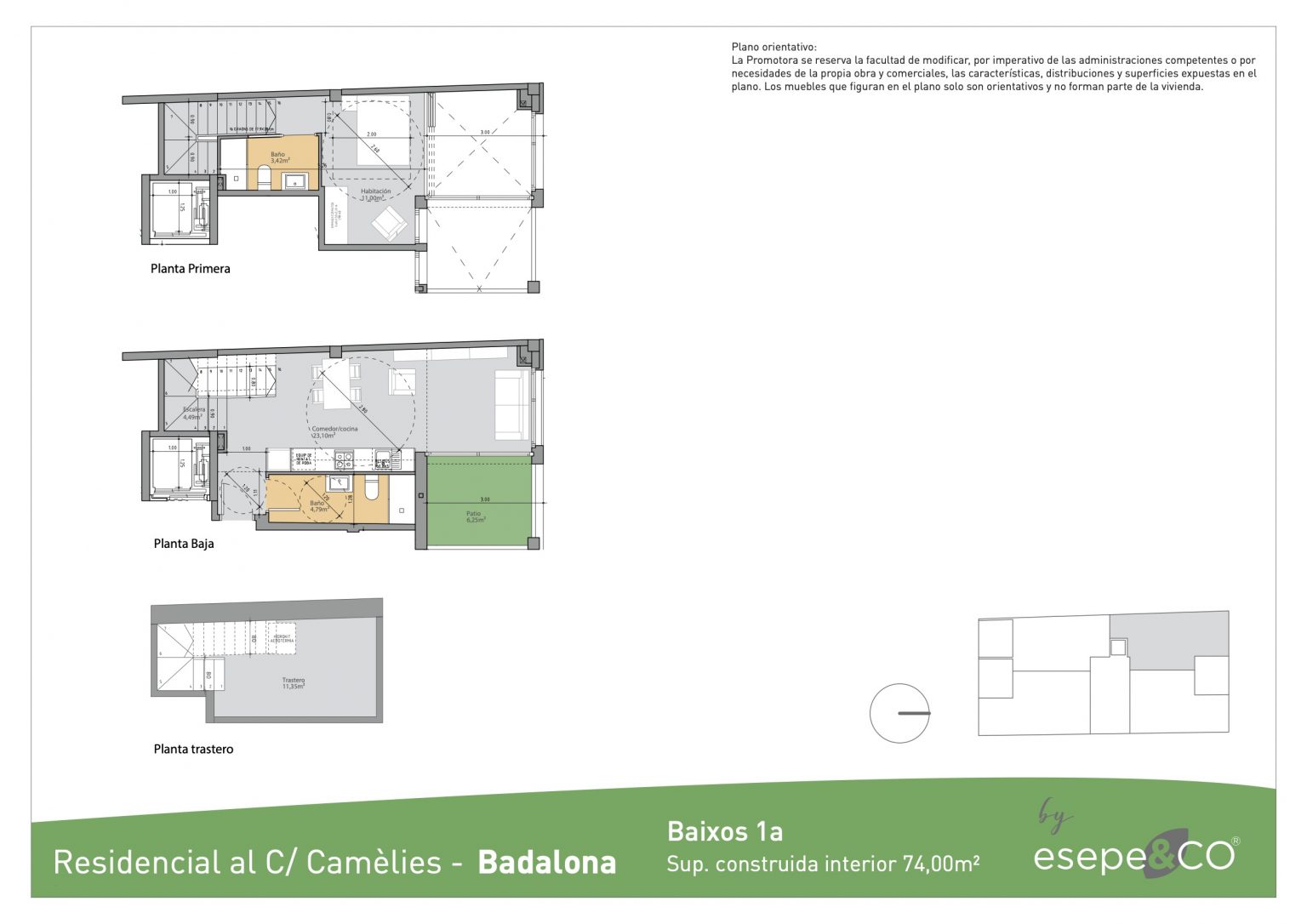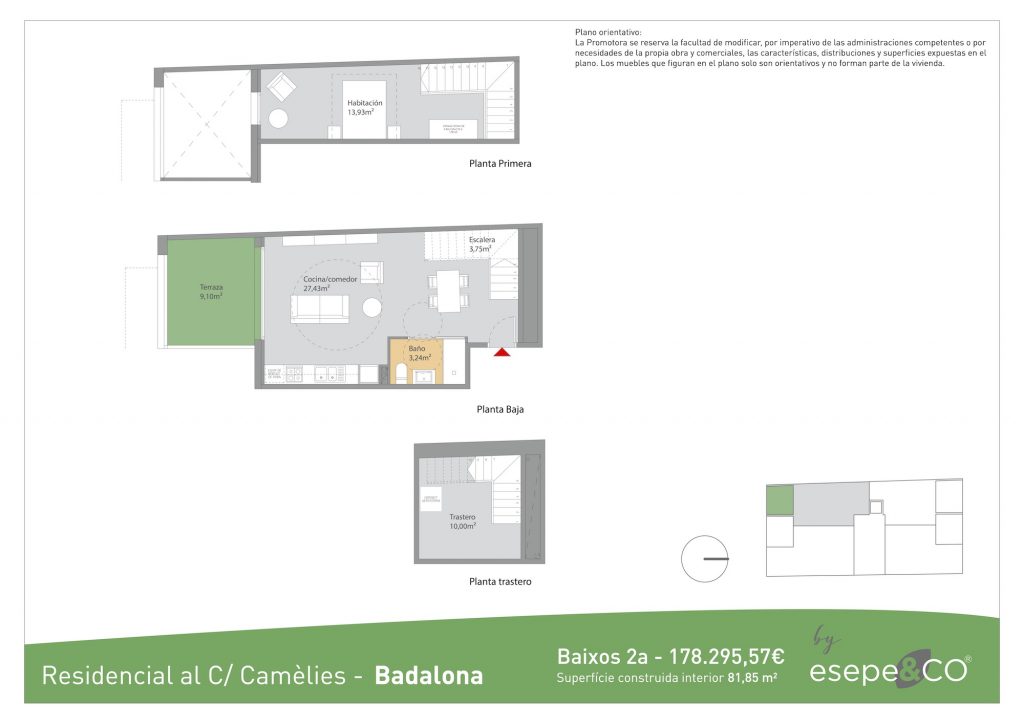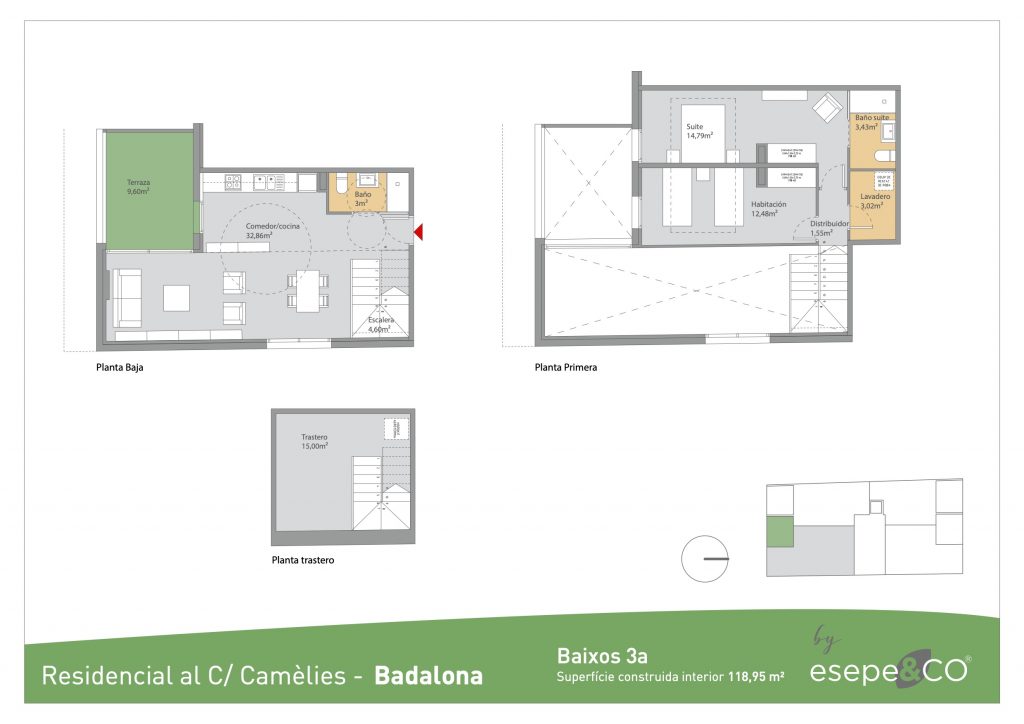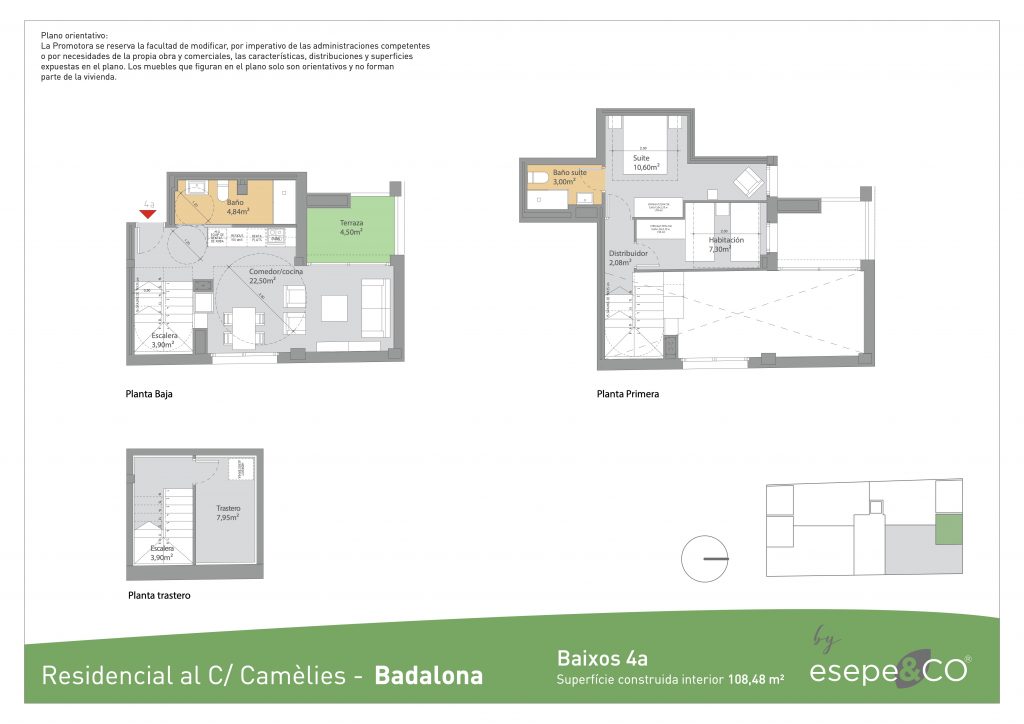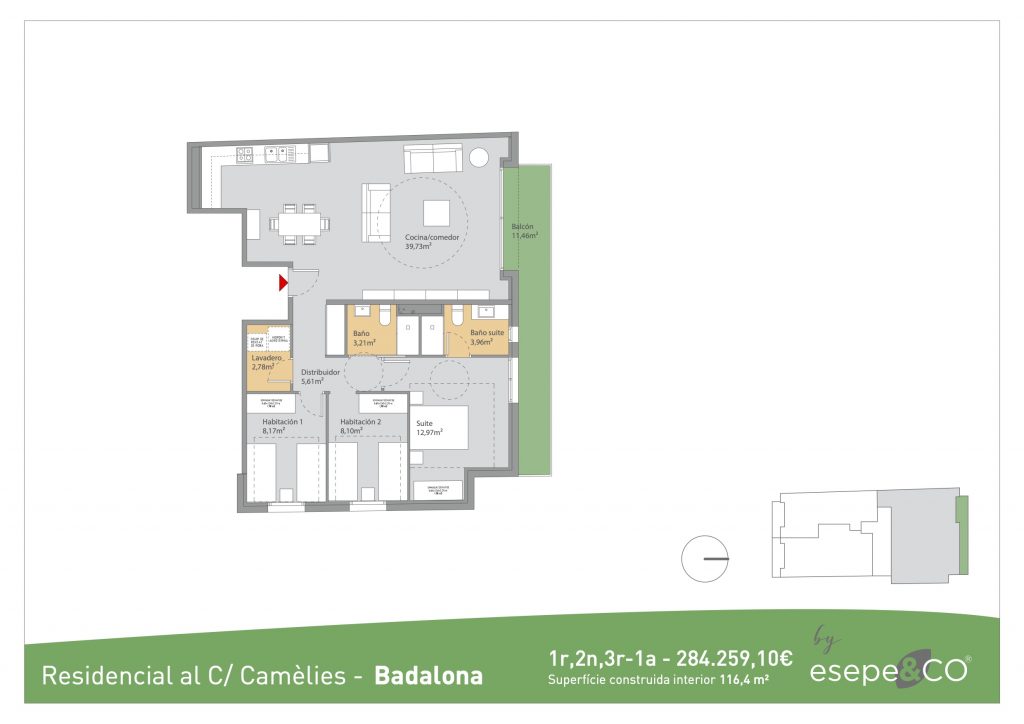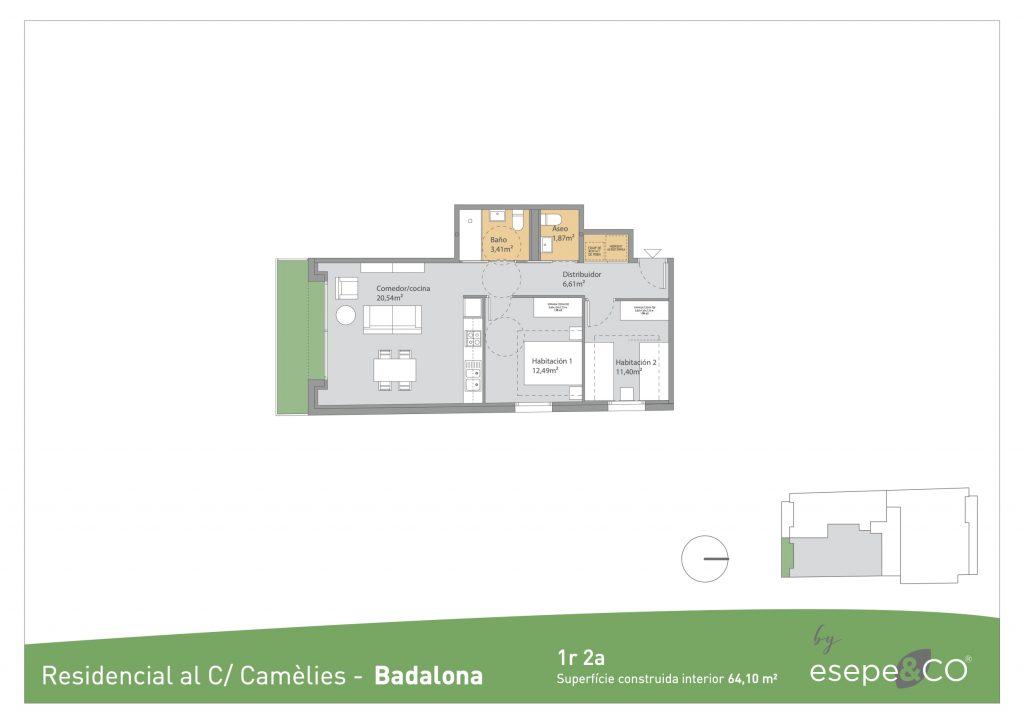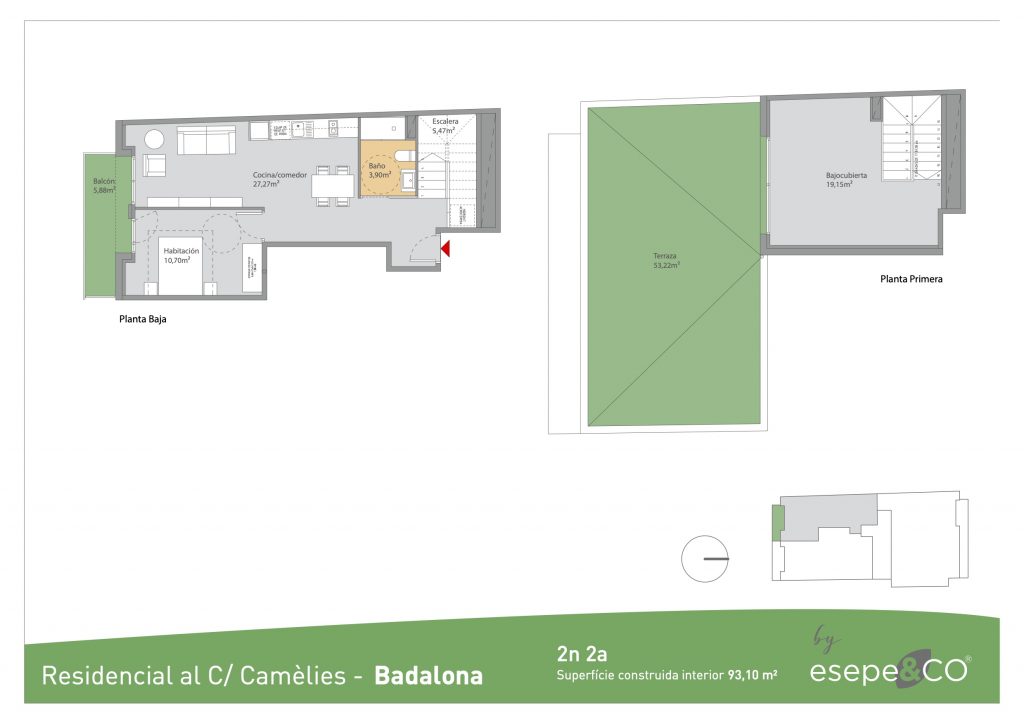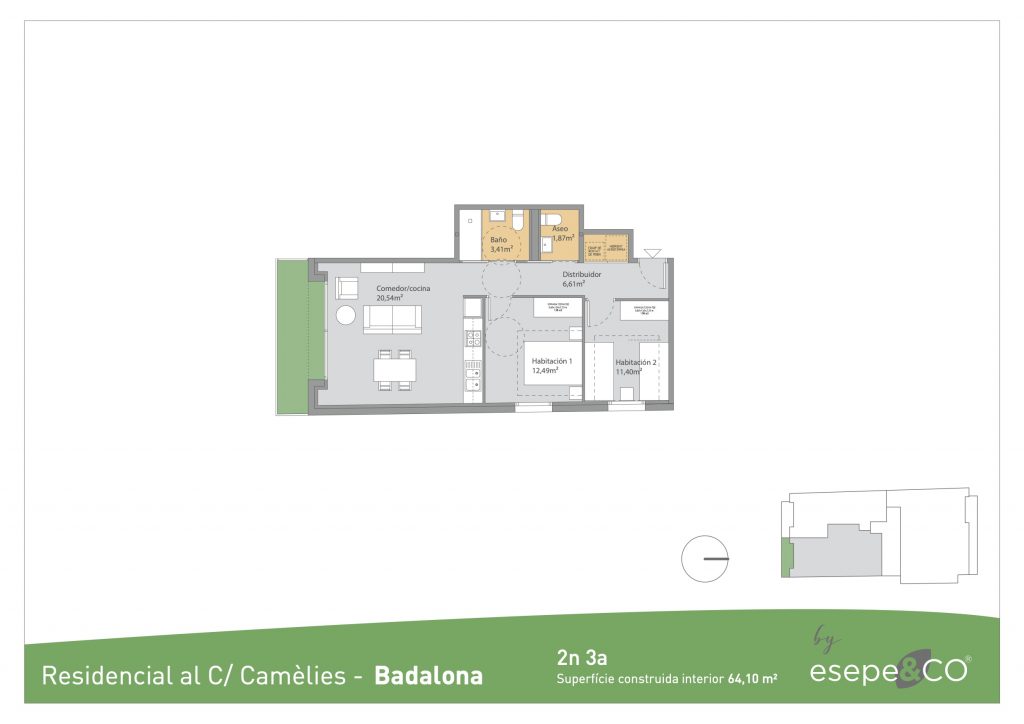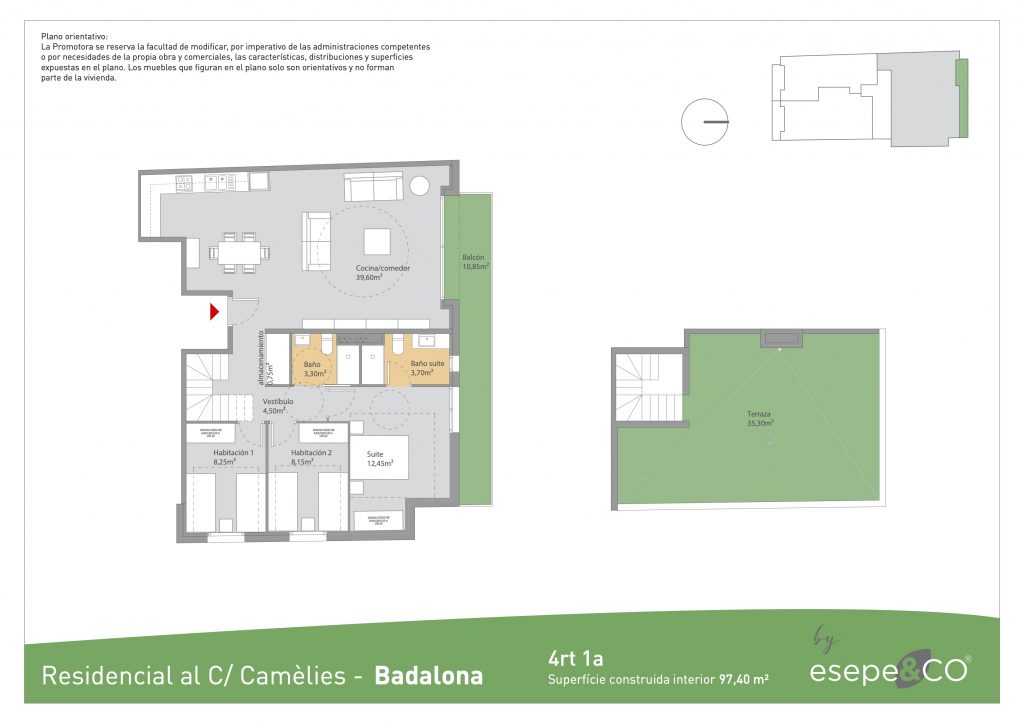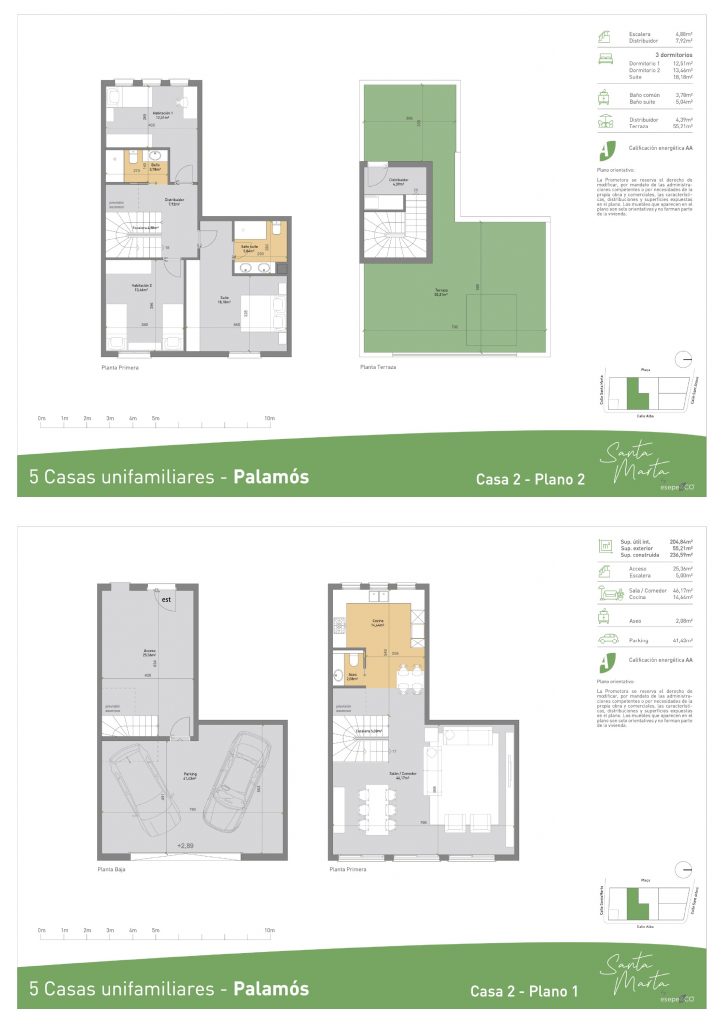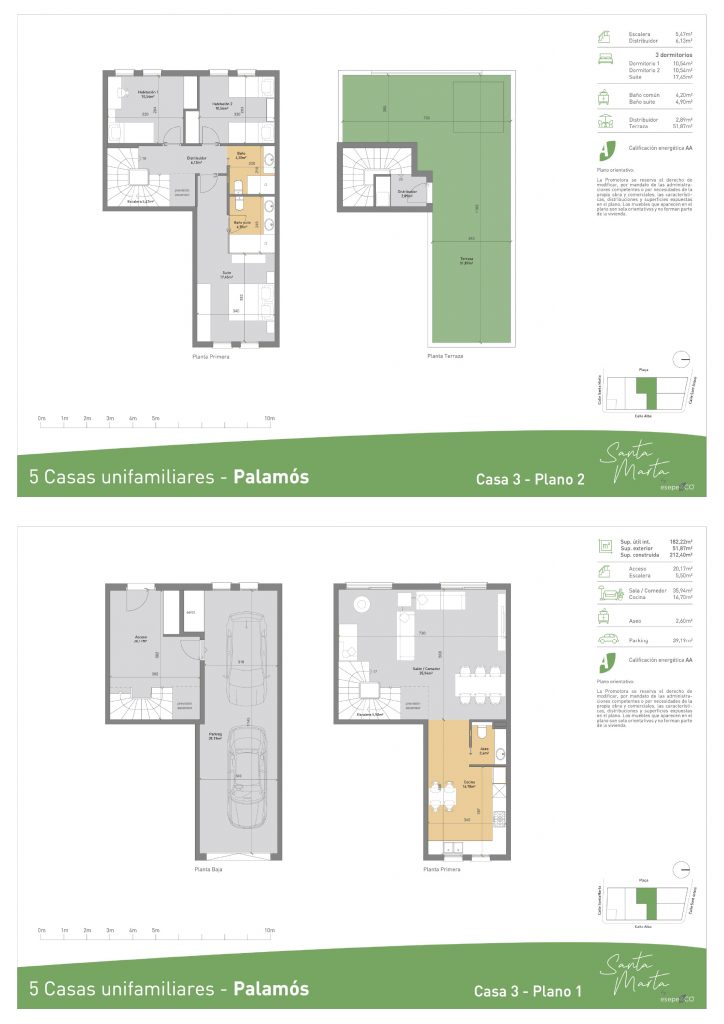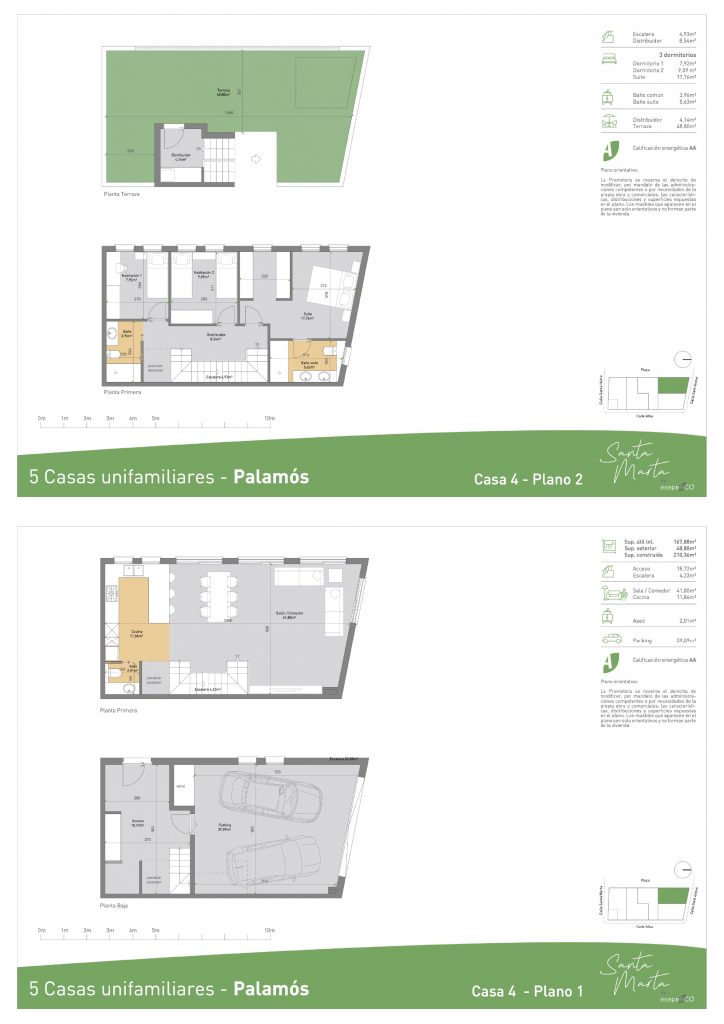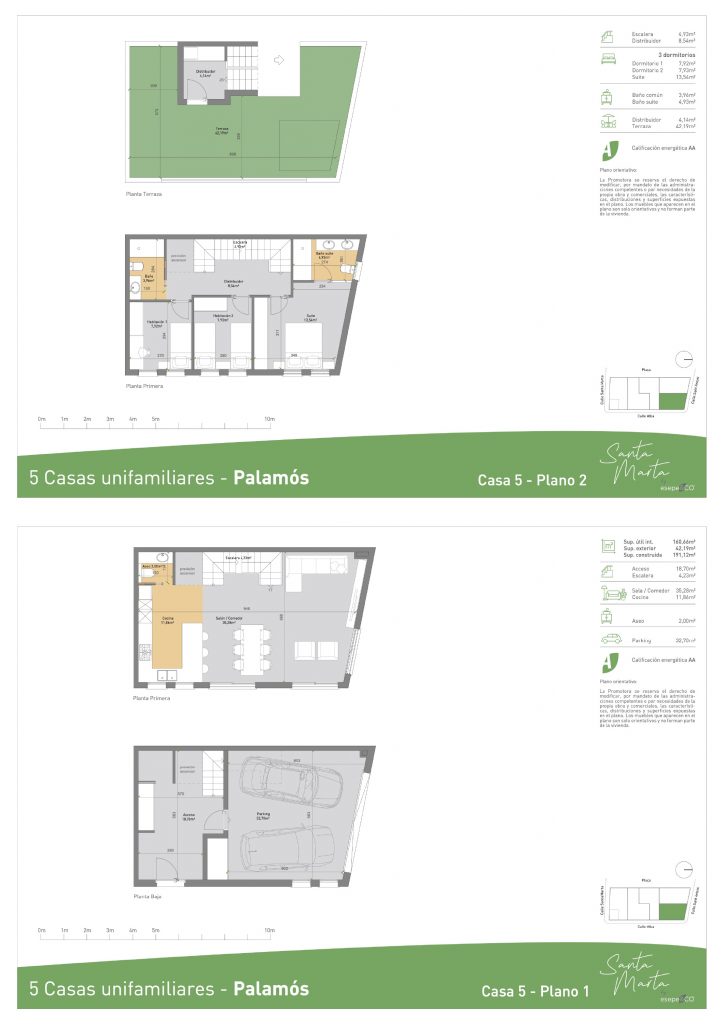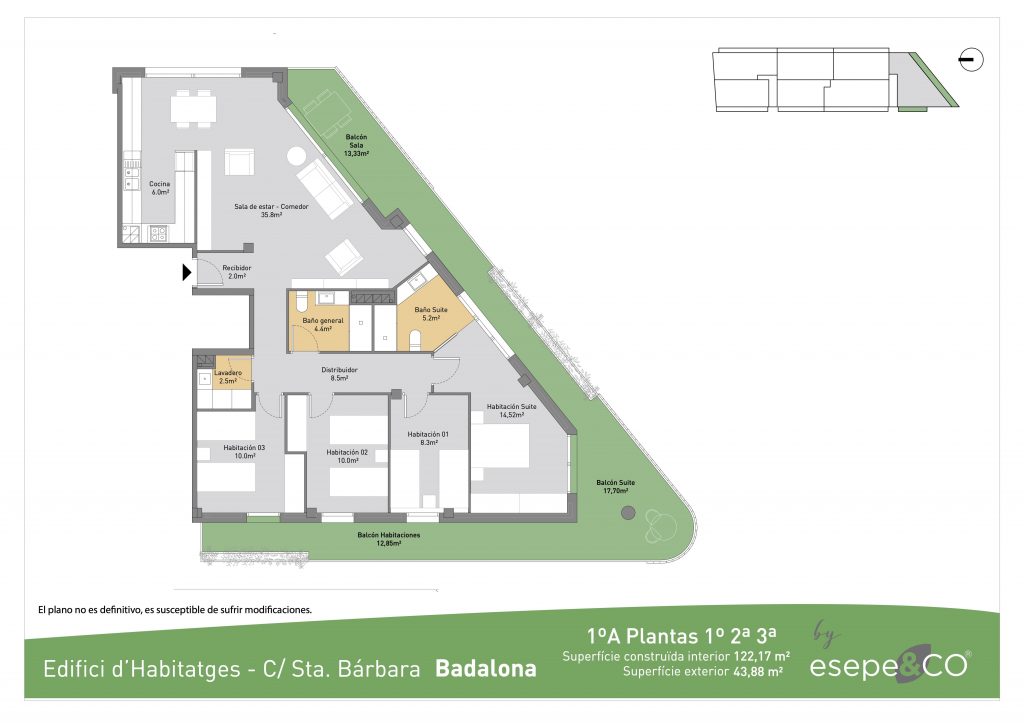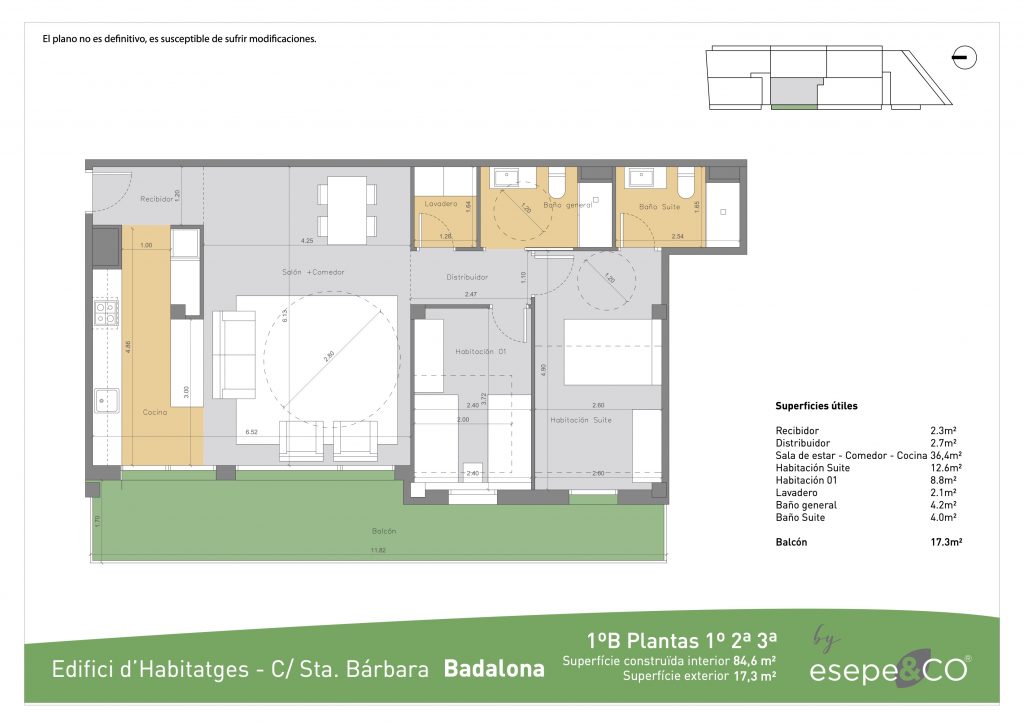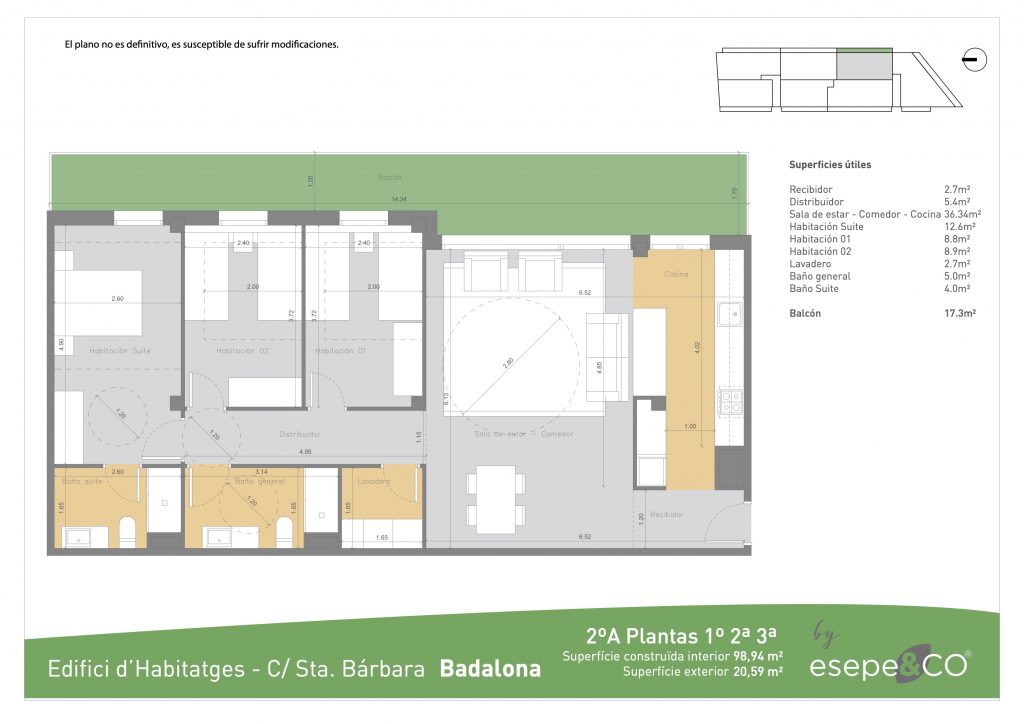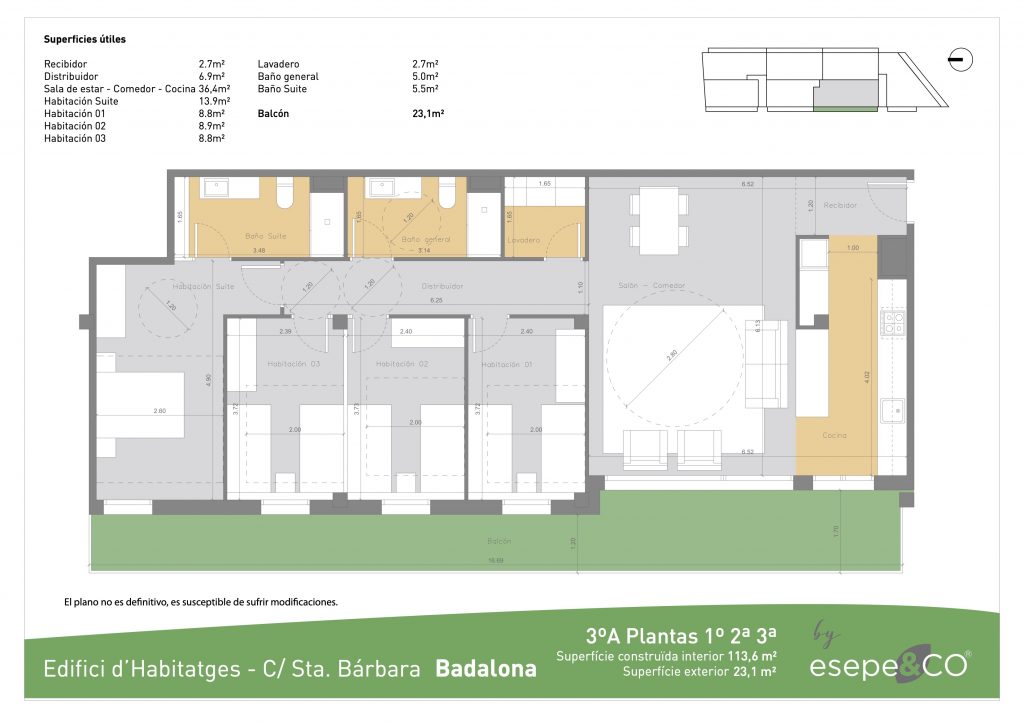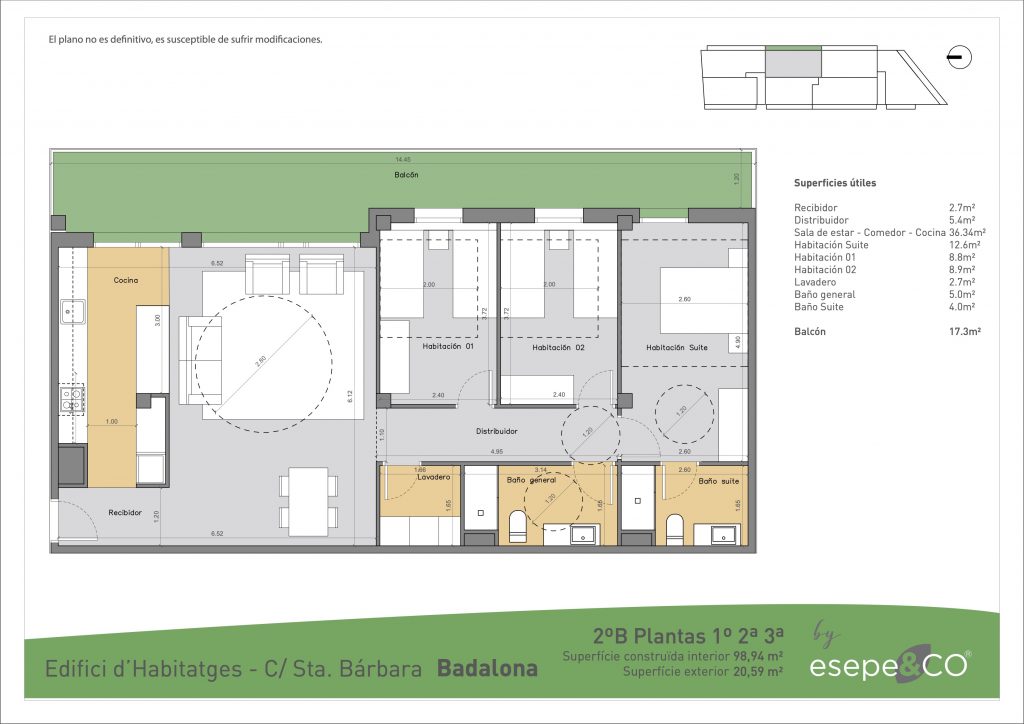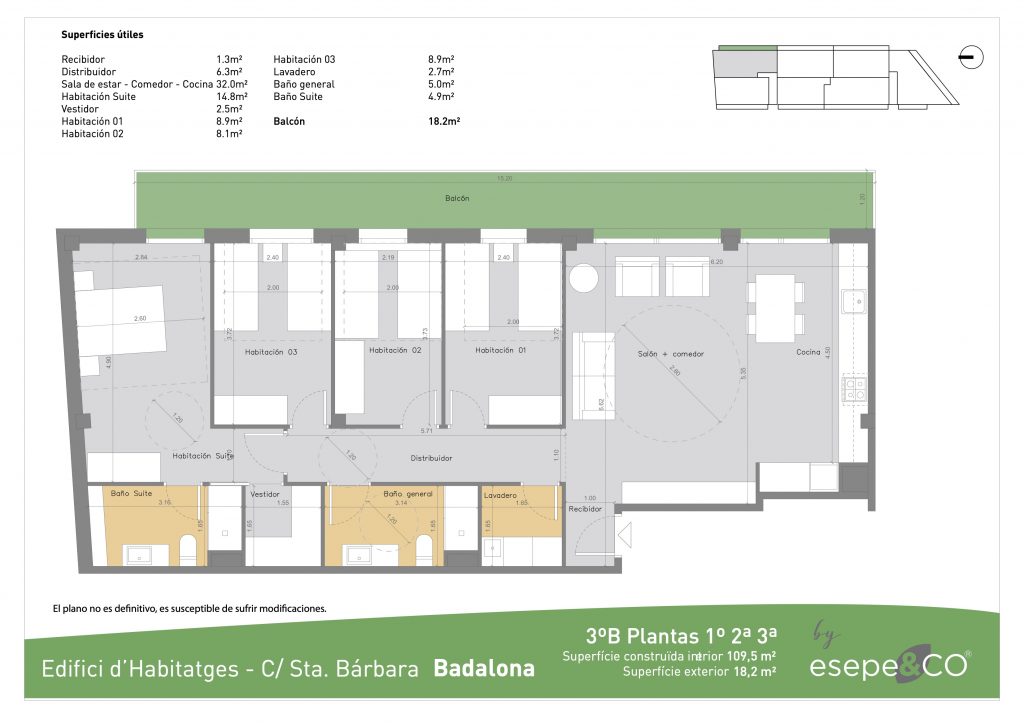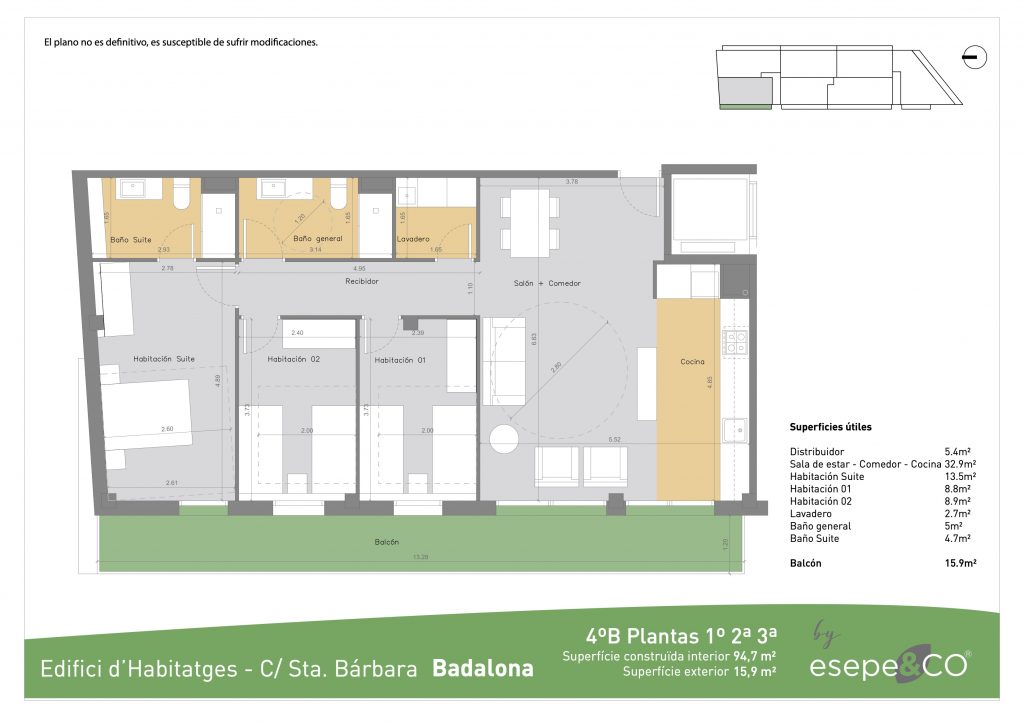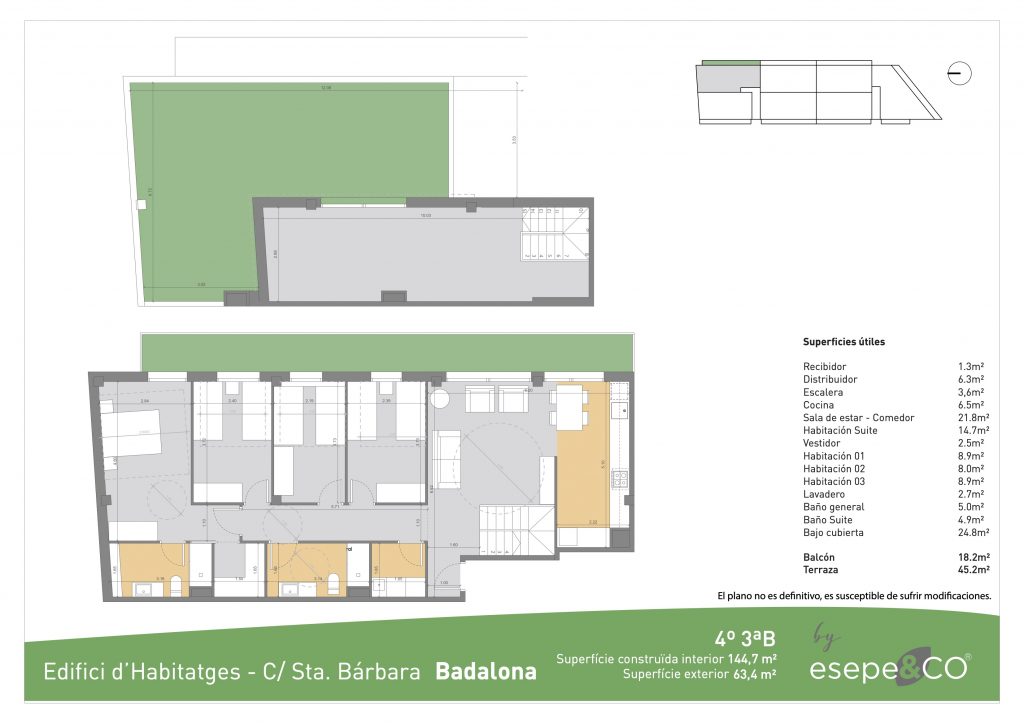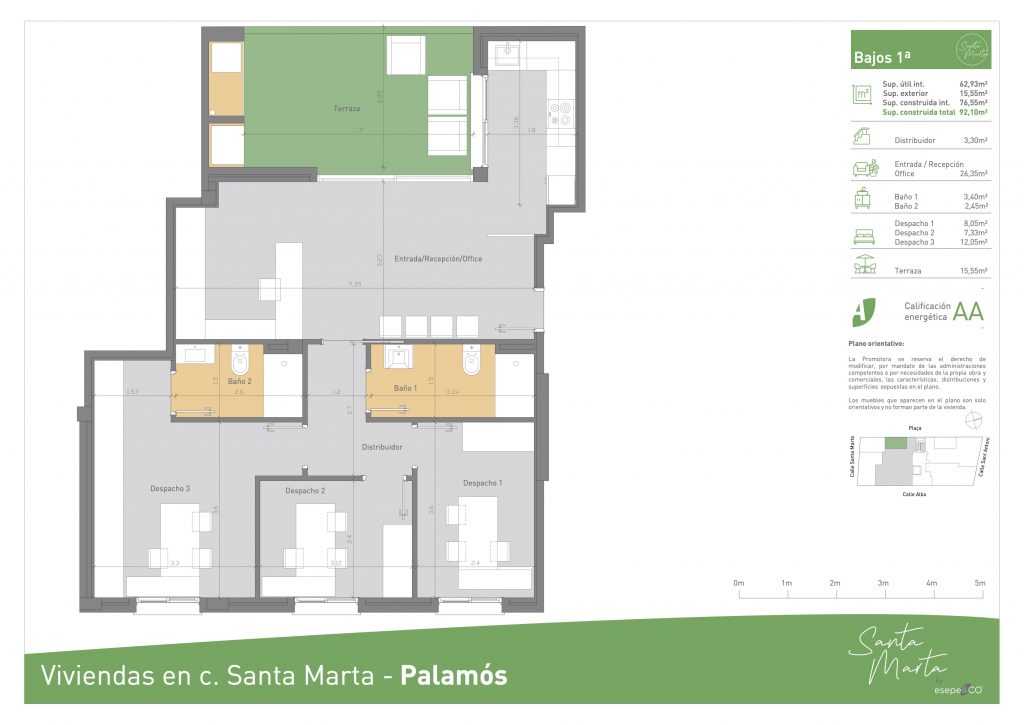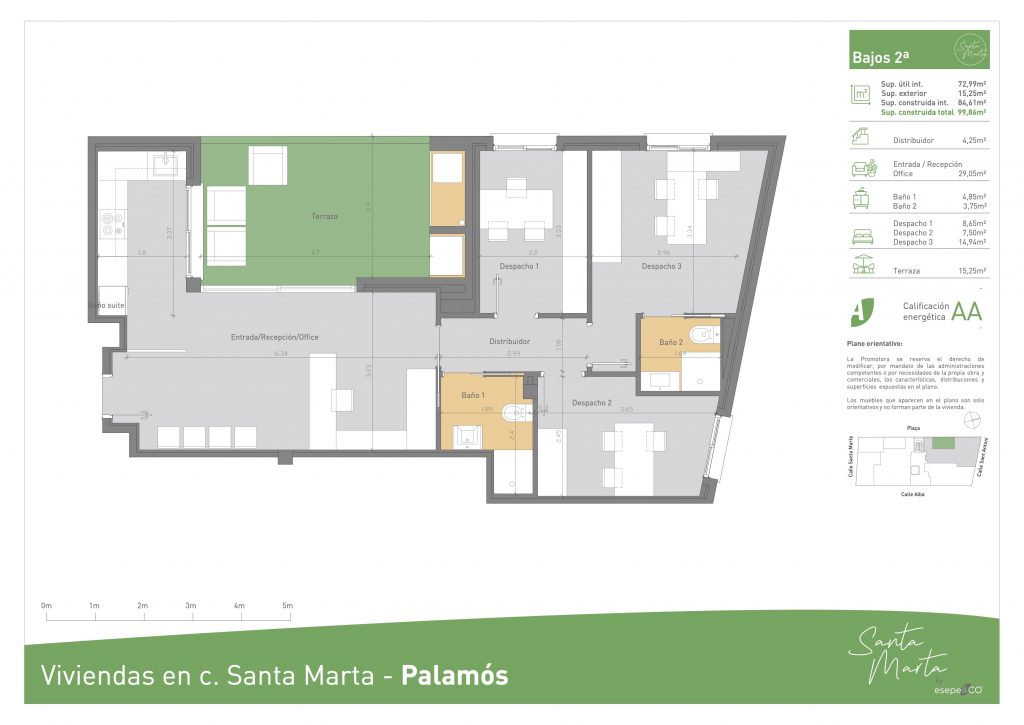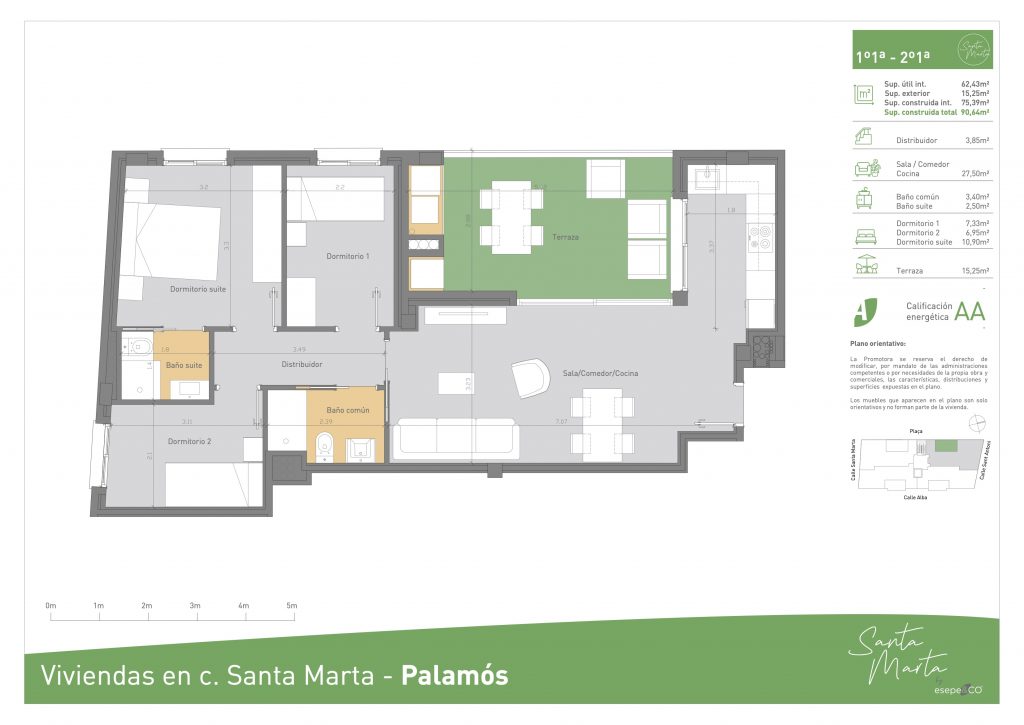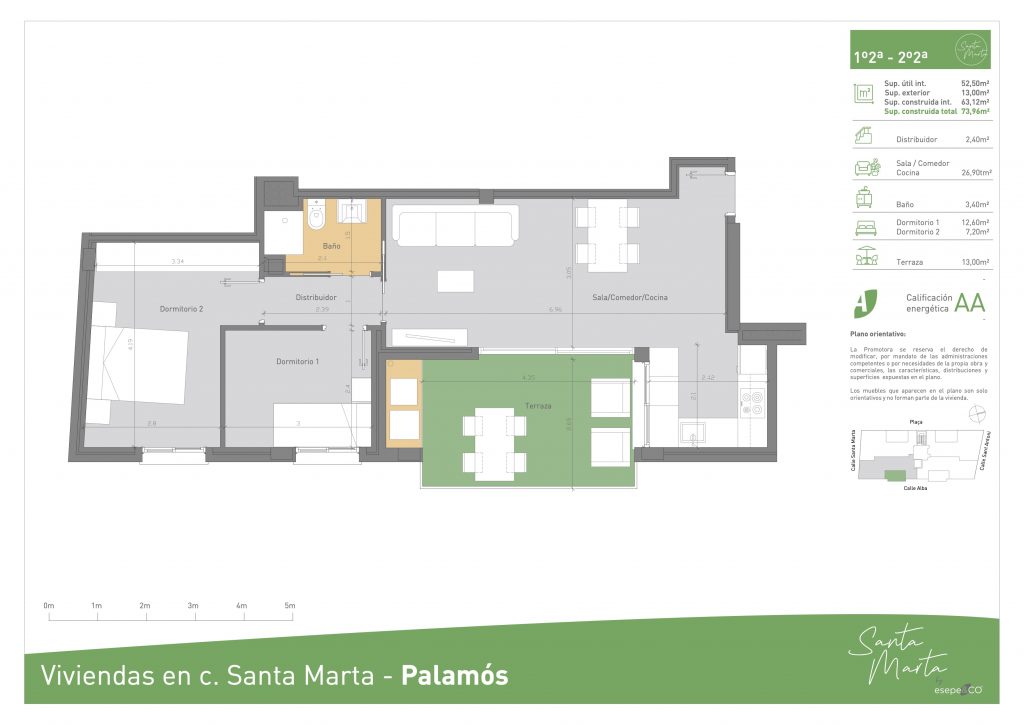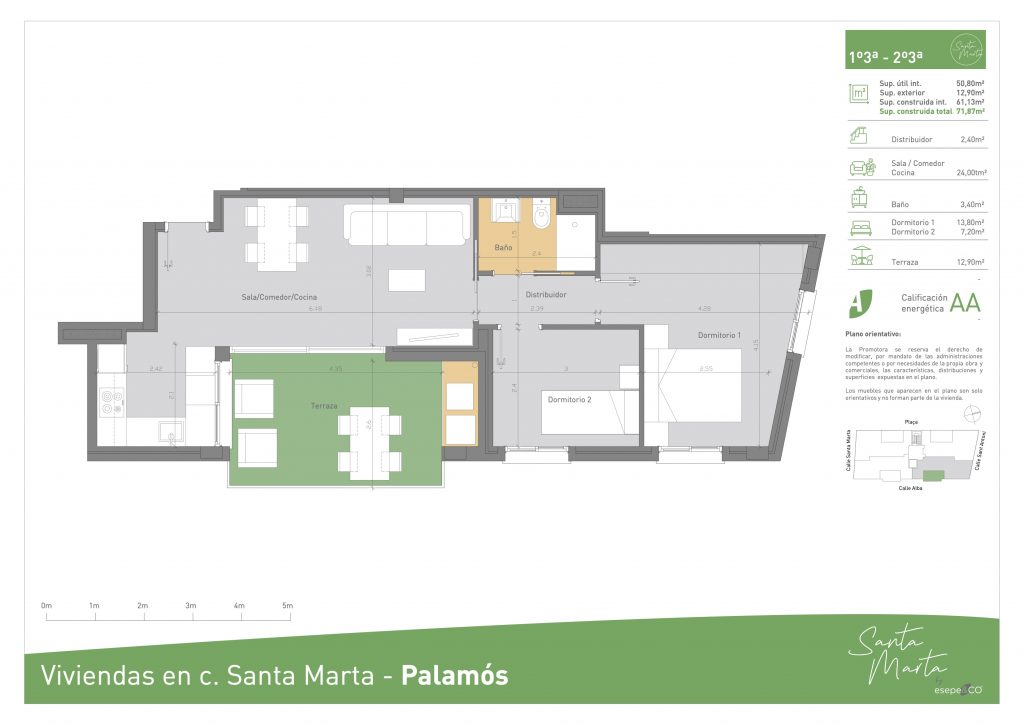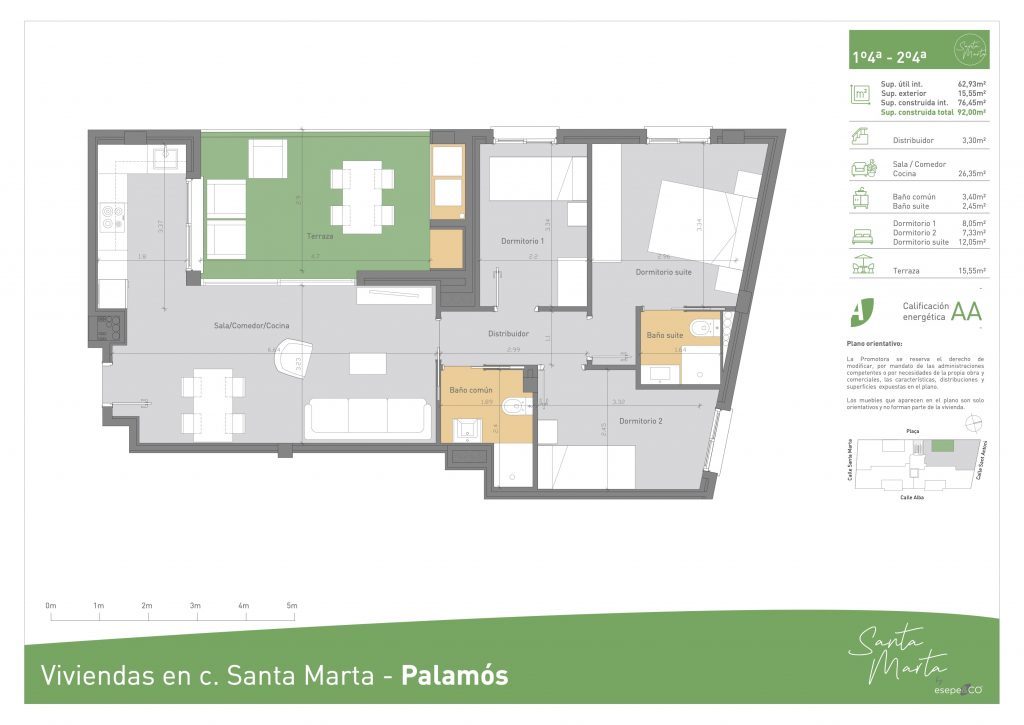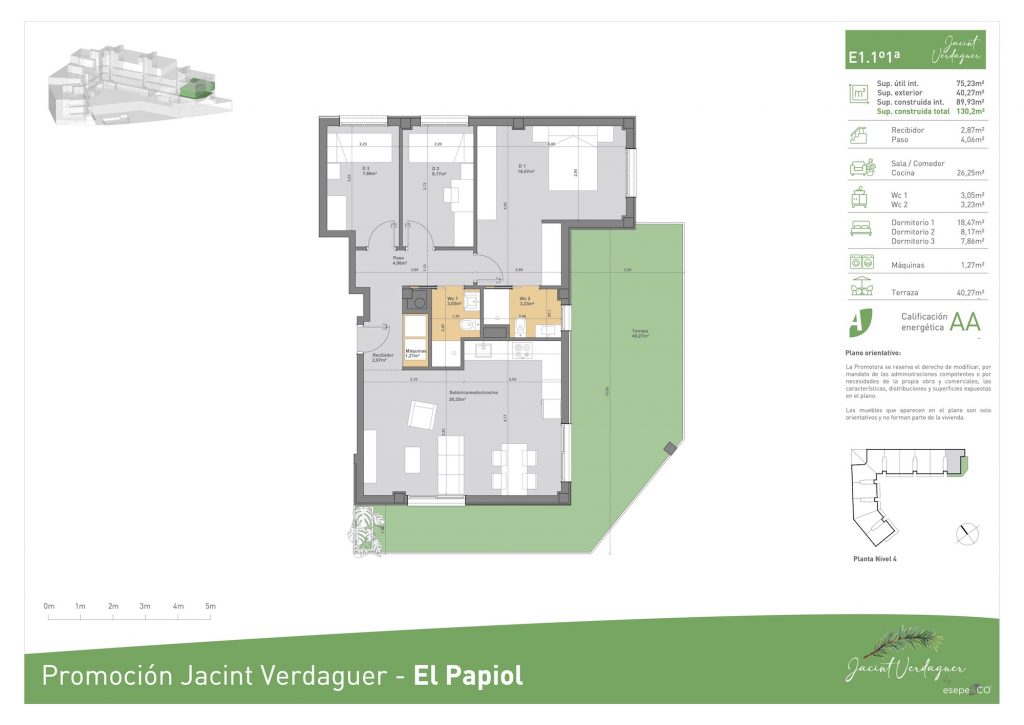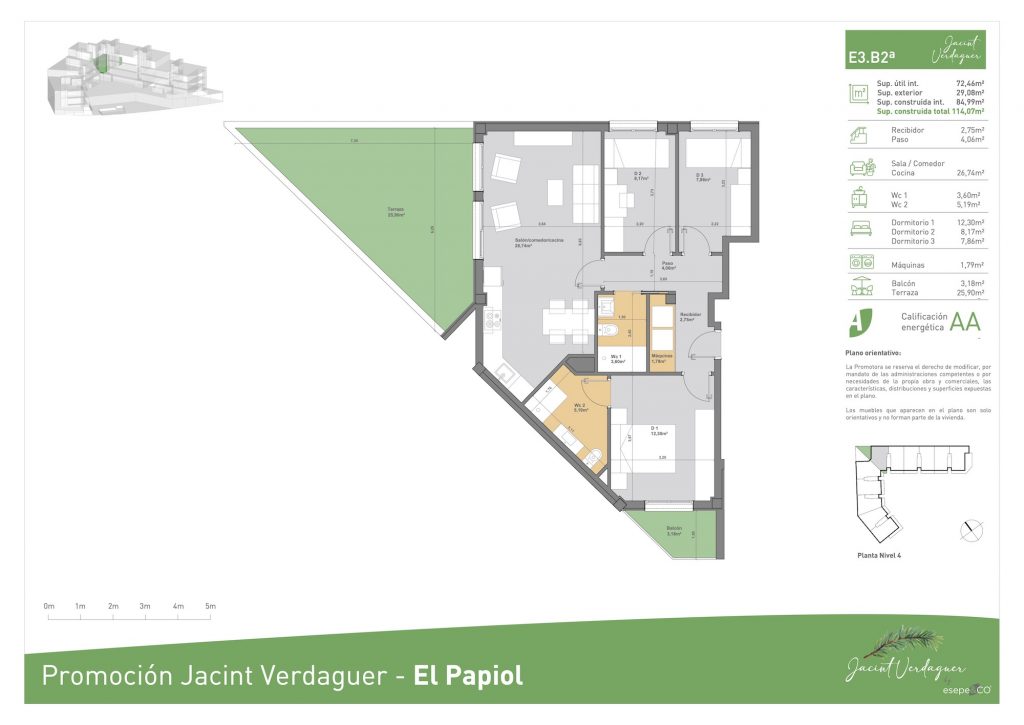how are they read?
FDEE Sheet
The FDEE certifies the energy performance of our buildings, addressing key aspects such as energy demand, consumption, and CO2 emissions. Our developments surpass the majority of constructions with an A rating thanks to innovative techniques, ecological materials, and advanced technologies.
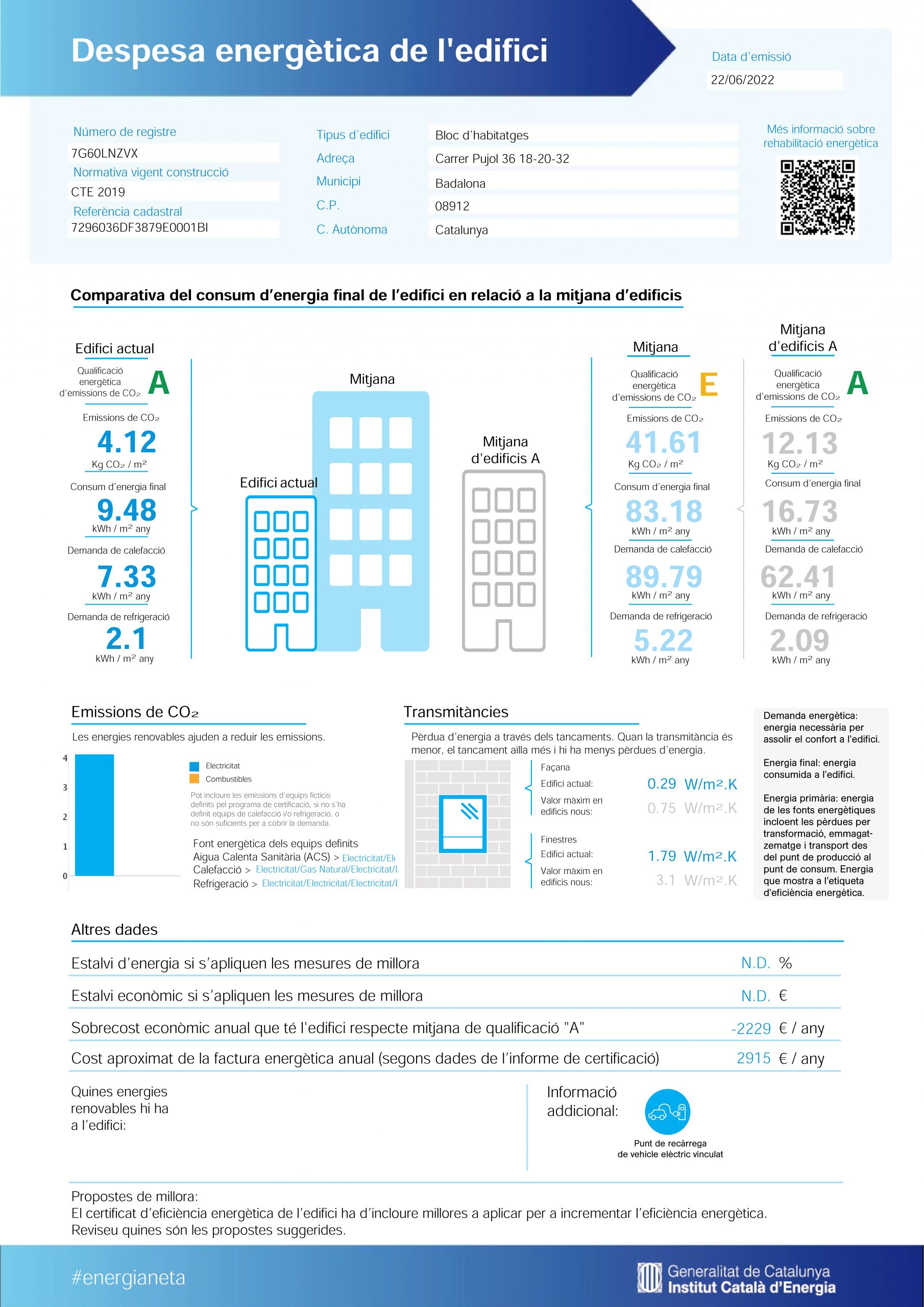
Emissions
-67% CO2 emissions
Our systems emit 67% less CO2 than the average of A-rated homes. When compared to the total of all homes, that figure increases to a staggering 90% less.
Energy consumption
-45% Total energy consumption
Energy consumption in our homes is 45% lower.
Demand
-88% Heating demand
Our homes perform excellently in winter. The energy demand is 88% lower than the average for A-rated homes. This results in significant savings.
Cooling demand
The cooling demand in summer is equivalent to the average of A-rated homes, and 40% lower than the average of all homes. For us, natural lighting is very important, and we spare no effort in providing windows and balconies towards the exterior.
Energy Rating Project Sheet
Discover the energy rating sheet: what it is and how to interpret it. Learn how to assess the efficiency and sustainability of a project through this key tool.
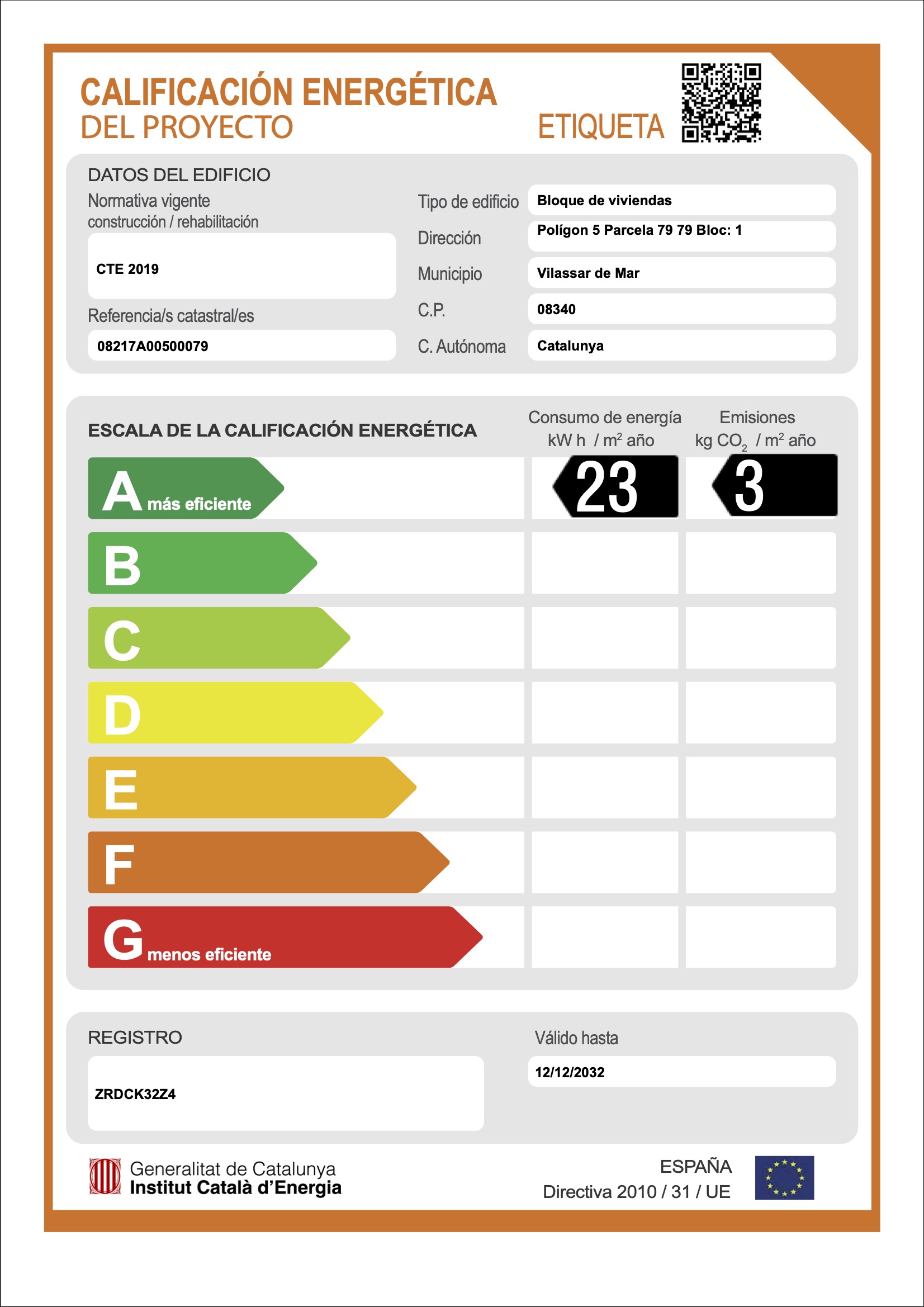
What is it?
The Energy Rating of Buildings is the official mechanism, both at the national and European level, for the assessment and comparison of energy efficiency and the integration of renewable energy sources in buildings.
Characteristics
The Energy Efficiency Rating of a Building allows assigning a label to each building or independent unit, providing information about the building’s Energy Consumption and CO2 Emissions, classifying it on a scale.
This classification ranges from Class A, indicating the lowest energy consumers, to Class G, representing the highest energy consumers, both in terms of energy consumption and emissions.
This rating is based on the evaluation of the building regardless of its actual use, simulating homogeneous operating conditions for all cases. It allows for the identification and comparison of buildings based on their energy performance rather than the occupants’ usage, which is essential in facilitating decisions related to buying, renting, or renovating a building.

